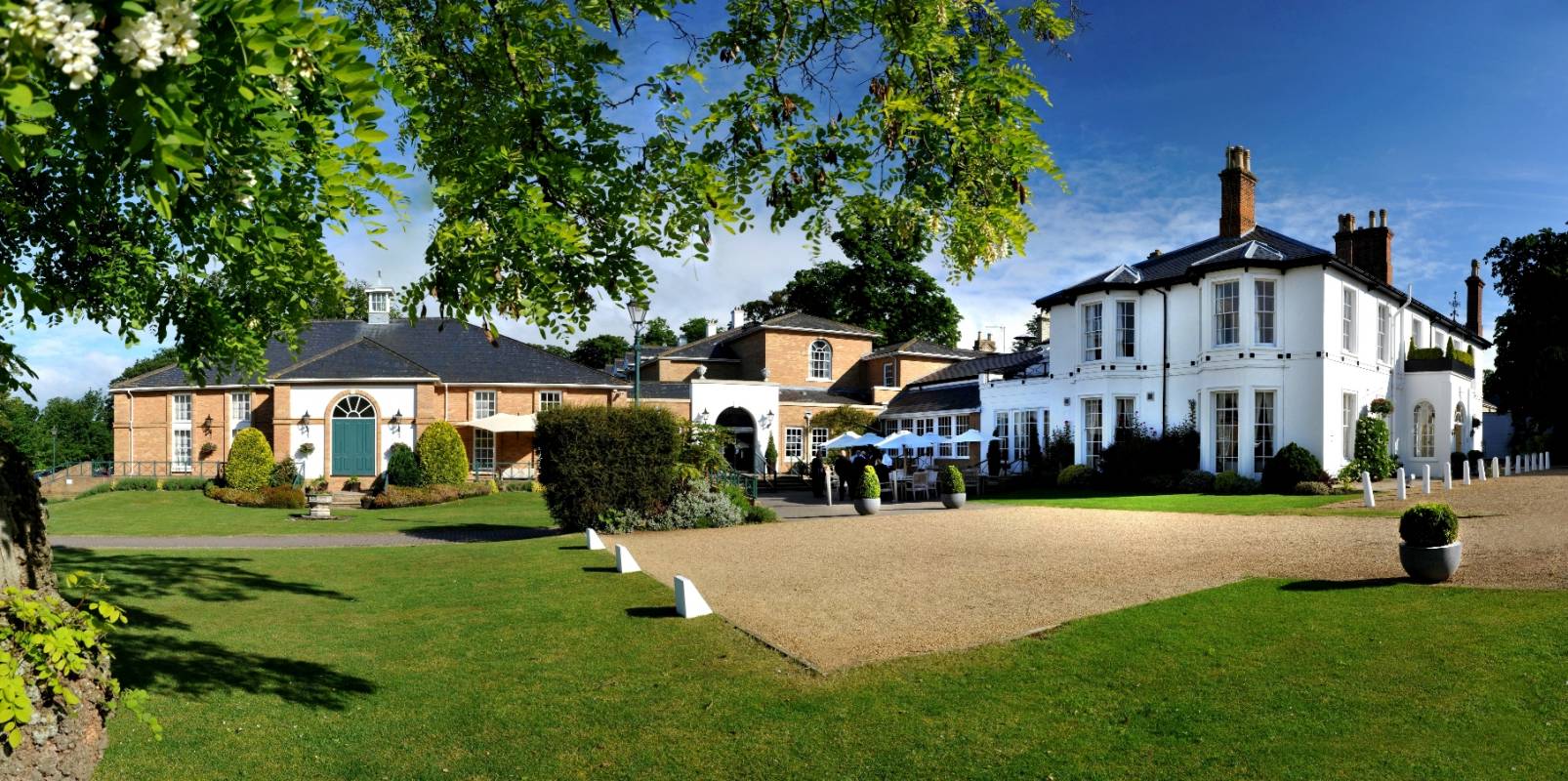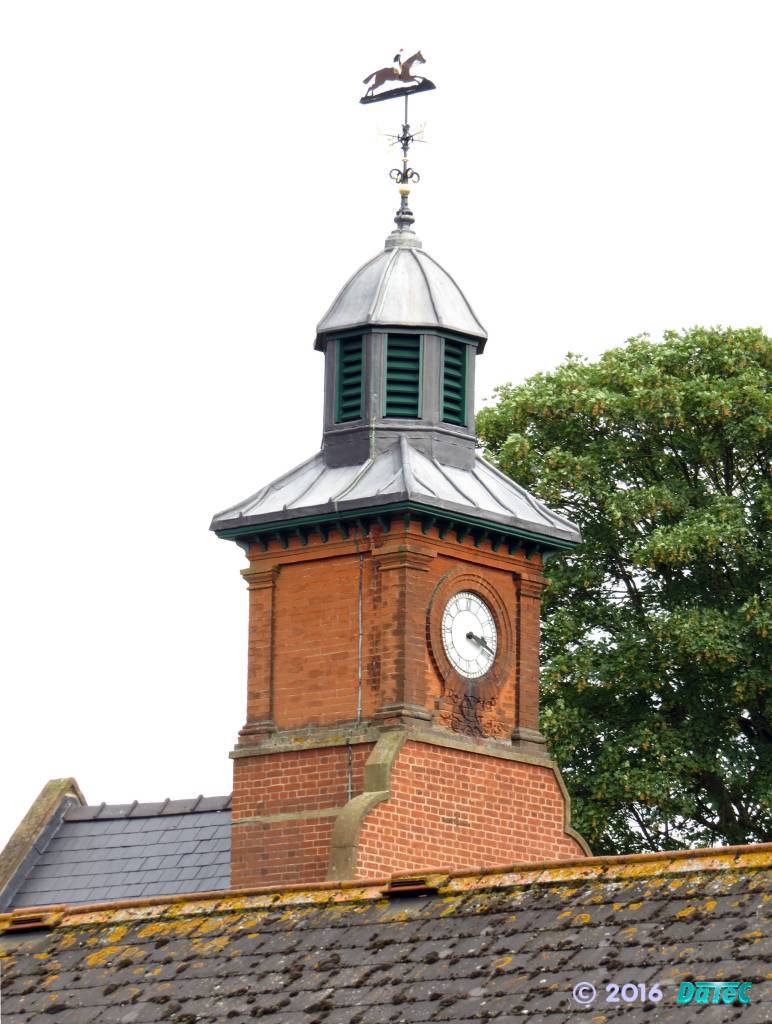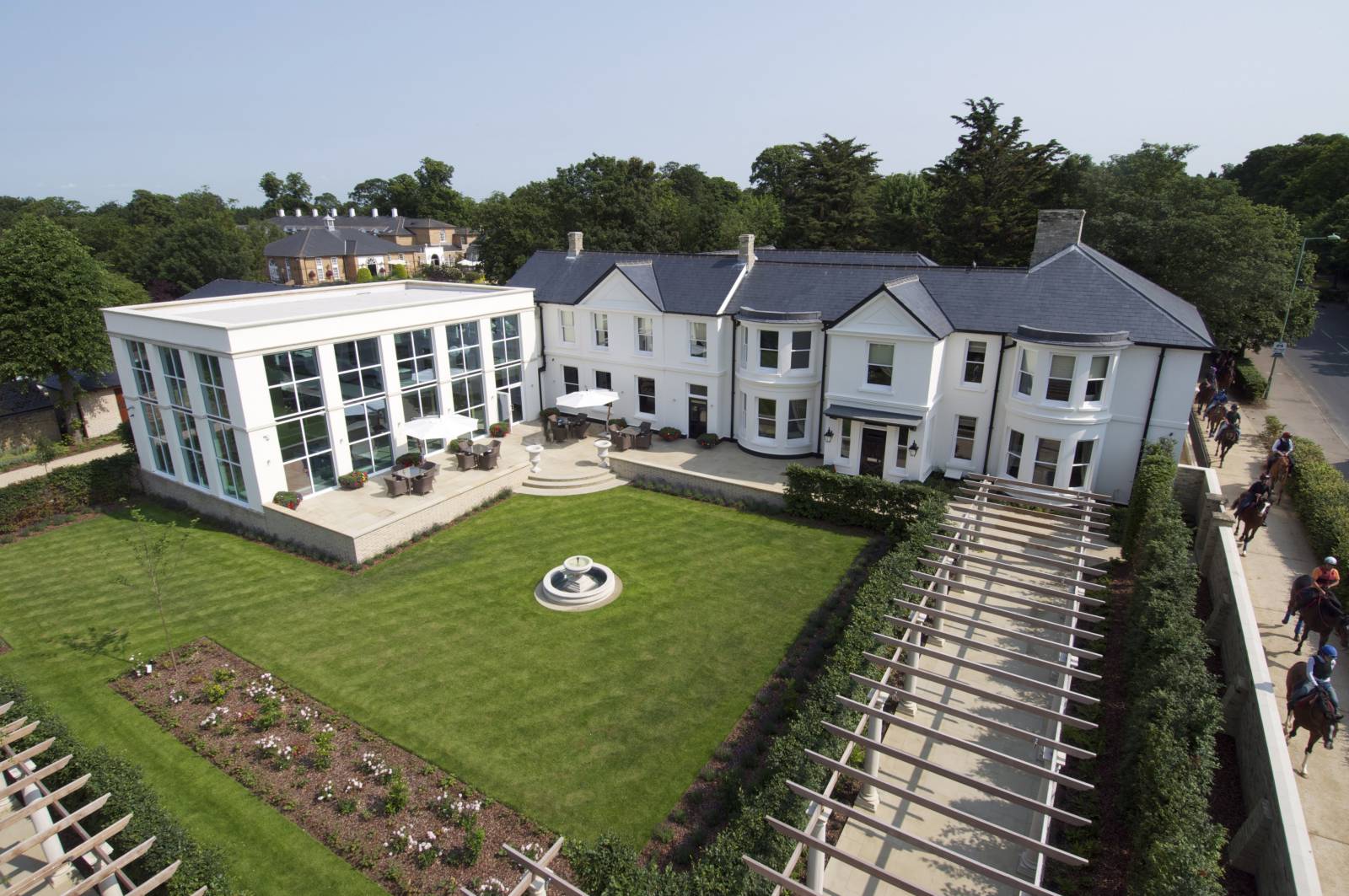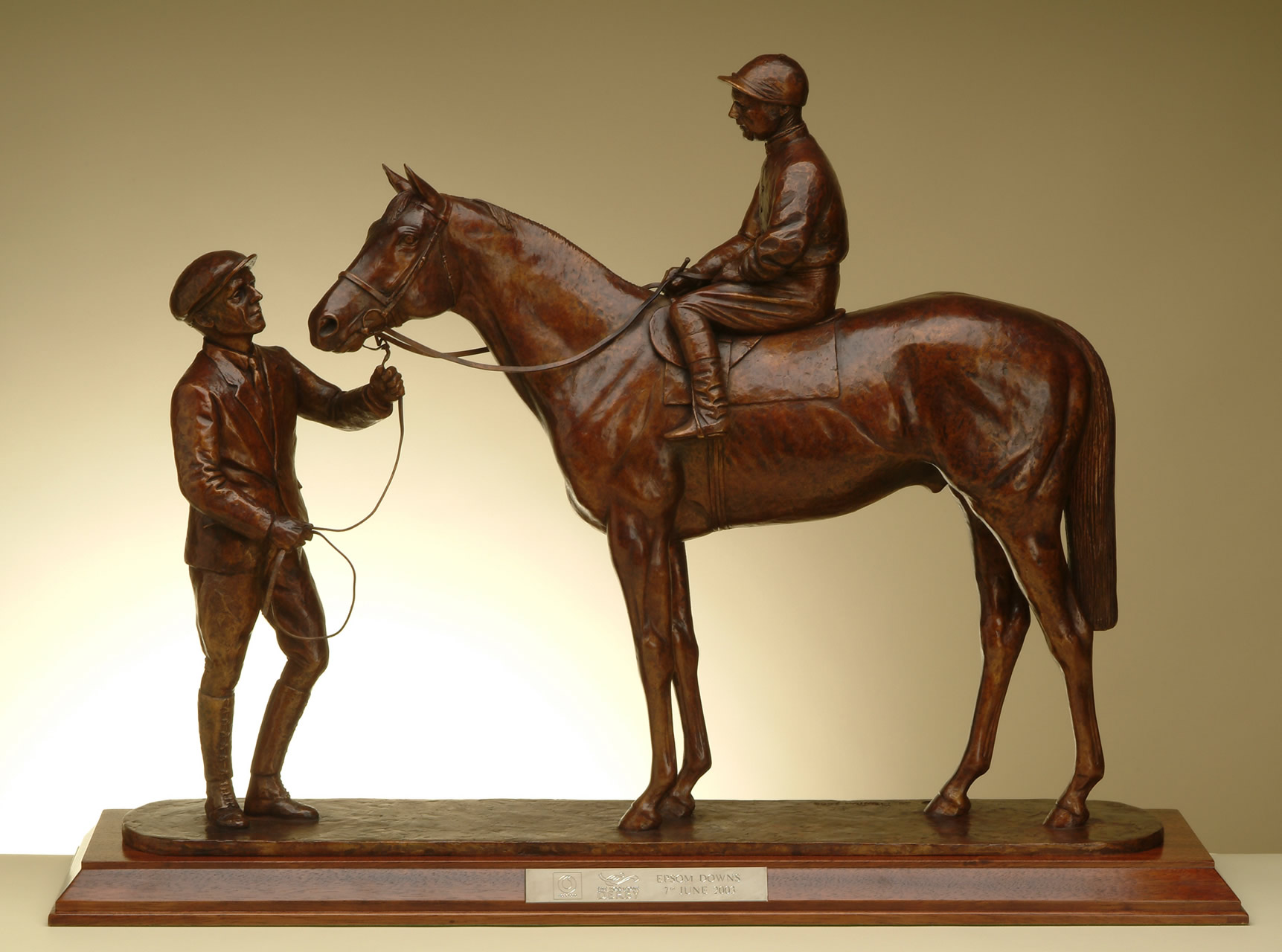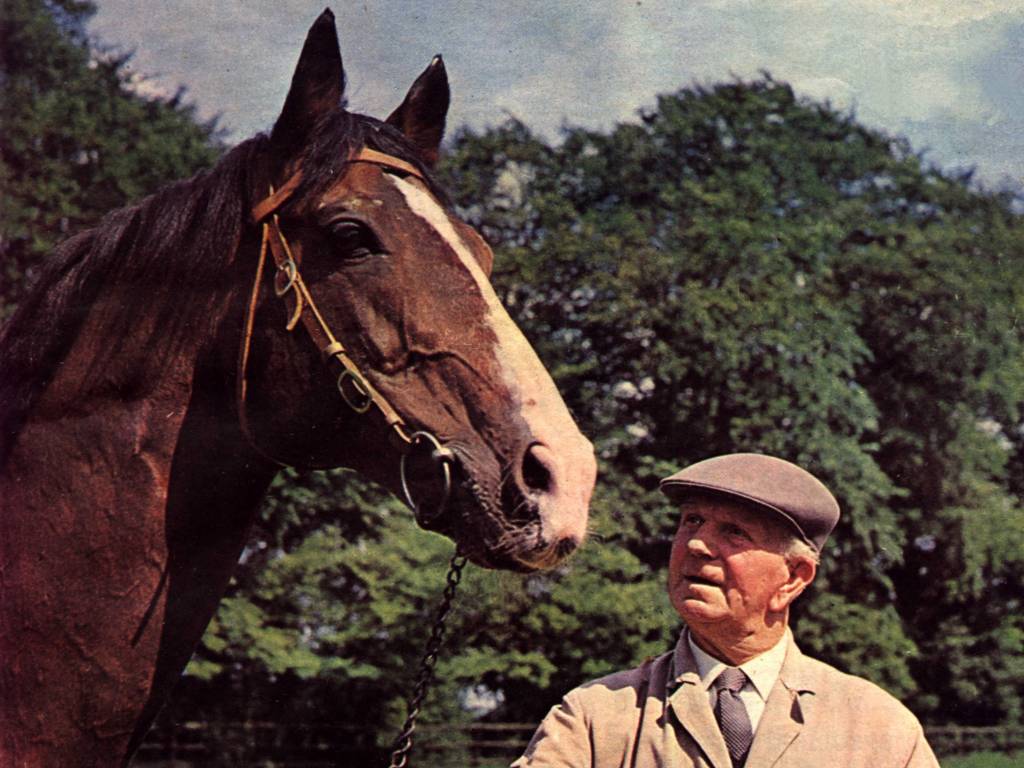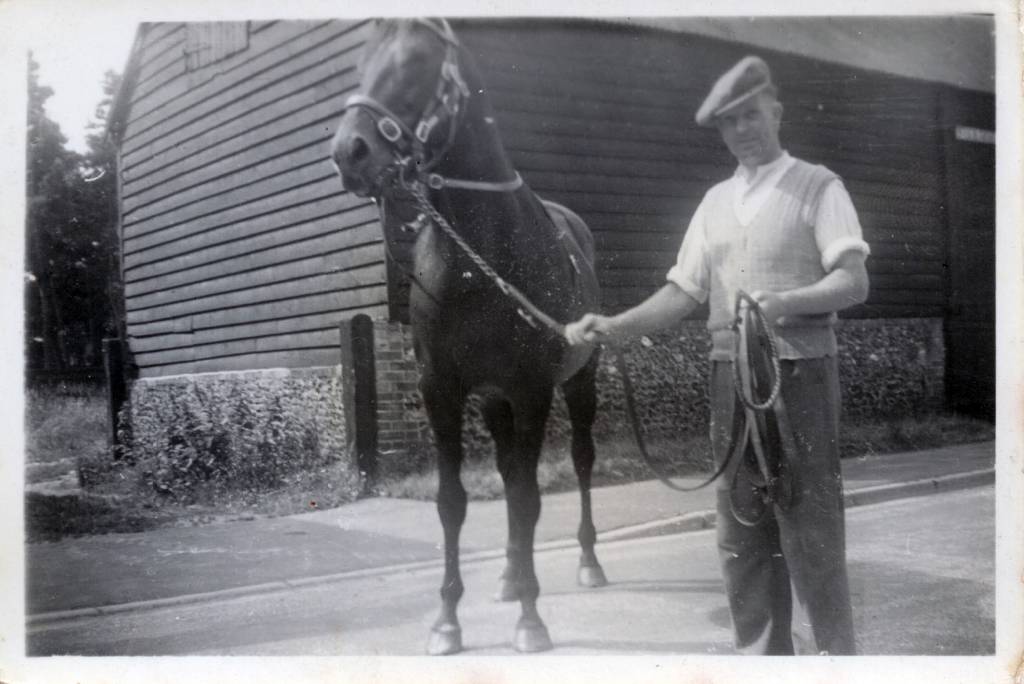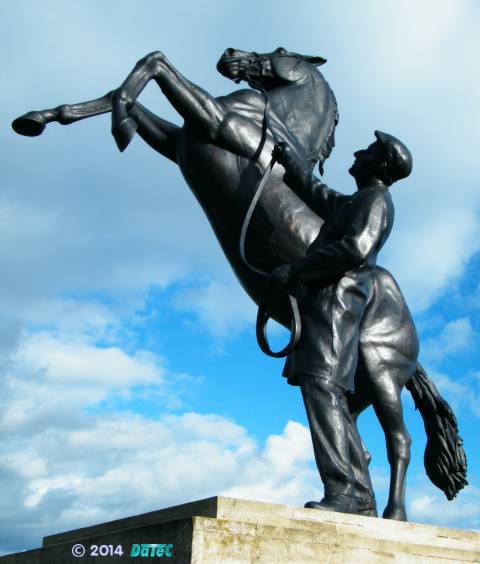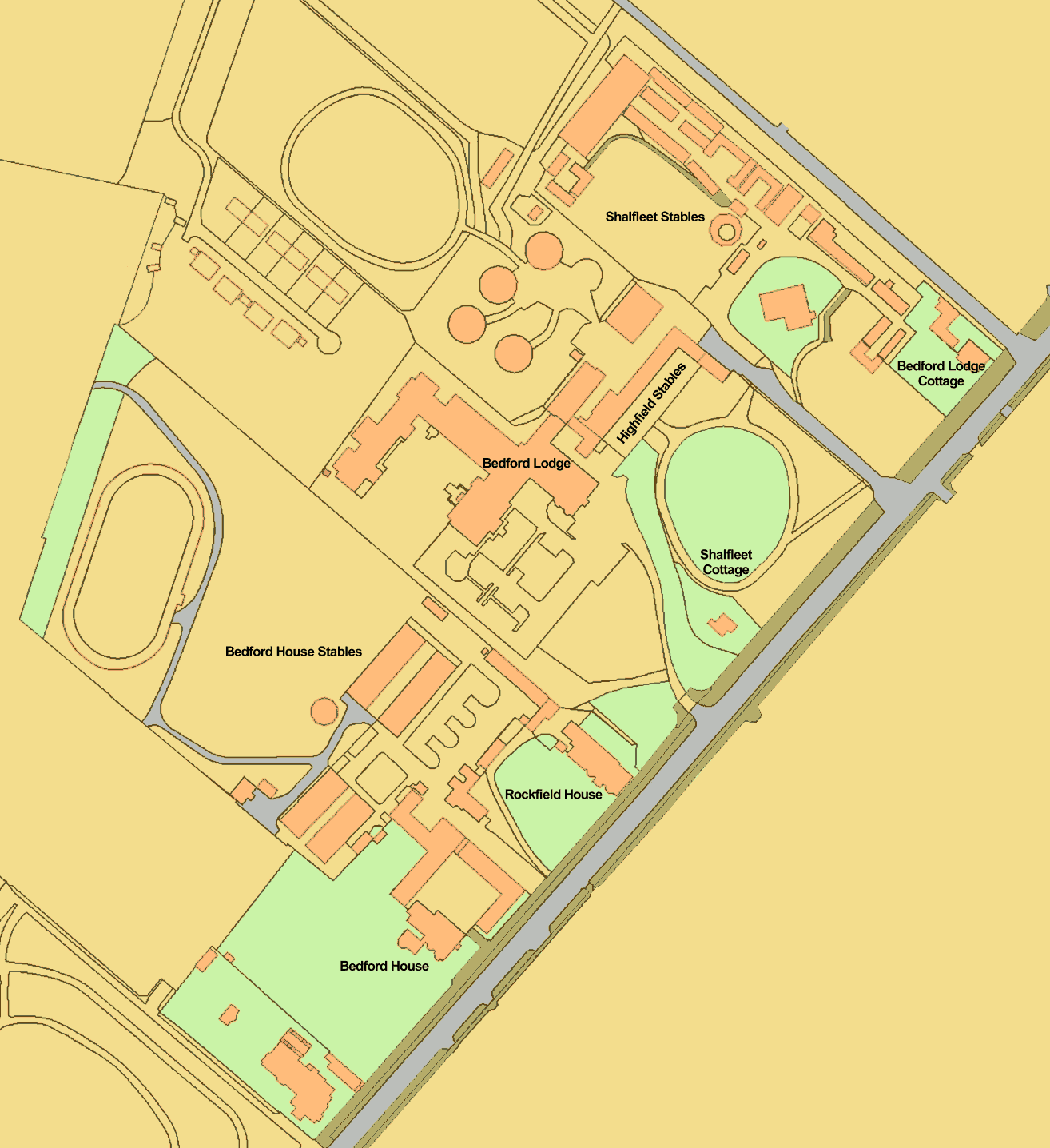Bedford Lodge
..7 Bury Road - Bedford House Stables
..9 Bury Road - Rockfield House (formerly Bedford Cottage)
9a Bury Road - Rockfield Cottage
11 Bury Road - Bedford Lodge Hotel & House
13 Bury Road - Shalfleet Cottage
15 Bury Road - Highfield House & Annexe
17 Bury Road - Highfield House / Shalfleet Stables
19 Bury Road - Bedford Lodge Cottage
21 Bury Road - Bedford Lodge Cottage Annex
House History
|
July 2013 |
Spa at Bedford Lodge opened (built in Rockfield House) |
|
2012 |
Bedford Lodge Hotel: Noel Byrne, chief executive |
|
December 2010 |
Bedford Lodge Hotel sold for an asking price of £12.5m to Review Hotels Ltd. |
|
1989 - 2010 |
Bedford Lodge Ltd. - Colin Bothway, principal shareholder |
|
18th Nov 2009 |
Bedford Lodge Ltd.: Manager - Alan Duncan Cowie |
|
15th May 2007 |
Bedford Lodge Ltd.: Manager - Noel Gerard Byrne |
|
14th Dec 2006 |
Bedford Lodge Ltd.: Manager - Alan Fuller |
|
2005 |
Bedford Lodge Ltd.: Manager - Ms Victoria May Doughty |
|
2003 - 2010 |
Rockfield House: 13-room hostel for the homeless |
|
2003 |
Bedford Cottage renamed Rockfield House |
|
1985 |
Bedford Lodge Hotel: Manager - Joseph Preston |
|
1980s |
Bedford Lodge Hotel: Manager - Terence Foreman |
|
1977 - 1979 |
Foreman T.A., 11a Bury Road - Nkt.61372 - Phone Book (Terry Foreman) |
|
1976 - |
Bedford House Stables: Luca Cumani |
|
1963 - 1974 |
J.M. Clayton - Bedford House - Phone Books |
|
1959 - present |
Shalfleet Cottage: John & Ena Powney |
|
- 1958 |
Shalfleet Cottage: William Gerard 'Paddy' O'Gorman |
|
1947 - present |
Bedford Lodge Hotel |
|
c.1937 |
Shalfleet Cottage built - details from John & Ena Powney (present occupiers) |
|
1932 - 1946 |
Bedford Lodge: H. Wragg, jockey - Nkt.328 - Phone Book |
|
1936 |
Bedford House |
|
1926 |
Bedford House: Bewicke, Captain P.W. - Nkt.255 |
|
1925 |
Bedford House: Bewicke, Capt. Percy W. - Nkt.255 |
|
1916 |
Bedford House: Paine, Frederick Charles |
|
2nd April 1911 |
Bedford Lodge Cottage: William Baldock, Guardman |
|
1901 |
Bedford House: James O. Machell |
|
1900 |
James Octavius Machell, Bedford House, Bury Road - Kelly's Directory |
|
1896 |
James Octavius Machell, Bedford House, Bury Road - Kelly's Directory |
|
1892 |
Baird G.A., Bedford Lodge - Kelly's Directory |
|
1892 |
James Octavius Machell, Bedford House, Bury Road - White's Directory |
|
1892 |
James Octavius Machell, Bedford House, Bury Road - Kelly's Directory |
|
1891 |
Bedford House: J.O. Machell, Magistrate late Capt. 59th Regt. |
|
1888 |
James Octavius Machell, Bedford House, Bury Road - Kelly's Directory |
|
1881 |
Bedford House: James O. Machell, Late Capt. 59th Regt. In The
Horseguards |
|
1879 |
James Octavius Machell, Bedford House, Bury Road - Kelly's Directory |
|
1874 |
Cannon Joseph, horse trainer, Bedford Cottage, Bury Road |
|
1871 |
Bedford House: James O. Machell |
|
1864 - 1880 |
Bedford Lodge: Joseph Dawson |
|
1864 - 1902 |
Bedford House: Captain James Octavius Machell |
|
1861 - 1864 |
William Butler |
|
14th May 1861 |
Purchased by Sir Joseph Hawley, sold on to William Butler |
|
1839 - 1861 |
Francis Russell, 7th Duke of Bedford |
|
c. 1820 - 1839 |
John Russell, 6th Duke of Bedford |
-
Notes
- As can be seen from the House History details above the overall
Bedford Lodge site is really quite complicated and from it's
inception in c. 1820 buildings and residents have come, moved
around, and gone ... keeping track of who was where and when has
been difficult and new details are constantly being added to this
page.
To help understand the overall site layout there's an outline map at the bottom of this page that hopefully helps in providing at least a general key as to what's here now.
- Listed below are many of the various aspects of the Bedford Lodge site (click on each for
further details):-
- Joseph 'Joe' Dawson & Bedford Lodge Stables
- Captain James Octavius Machell & Bedford Cottage Stables
- Joseph Cannon
- George Alexander Baird & Bedford Lodge Stables
- Frederick Arthur Stanley, the 16th Earl of Derby & Bedford Lodge Stables
- The Honourable George Lambton
- Captain Robert Henry Dewhurst
- Lady Ludlow - Bedford Lodge
- William Maxwell Aitken, Lord Beaverbrook - Calvin House
- Harry Wragg
- Robert Weston Colling
- Harvey Cliff Leader - Shalfleet Stables
- Paddy O'Gorman - Shalfleet Cottage
- Fred & John Winter - Highfield
- Bedford Cottage - Rockfield House
- Bedford House Stables
- Captain Percy Wentworth Bewicke
- John Maurice 'Jack' Clayton
- Noel Cannon
- Luca Cumani
- Bedford Lodge Hotel
- Bedford Lodge Hotel - Listed Building Details:-
http://www.britishlistedbuildings.co.uk/en-505821-bedford-lodge-hotel-newmarket-suffolk
-
Bedford Lodge was originally a house with very extensive grounds. It
was built c. 1820 for John Russell, 6th Duke of Bedford (1766 –
1839) as his Newmarket
residence. Subsequently within the same small estate were Bedford
House and Stables, Bedford Cottage (now
Rockfield House) and stables, the former Bedford Lodge Stables (now
separately occupied as Highfield Stables) and Shalfleet
Stables.
After the death of his son Francis Russell, 7th Duke of Bedford on 14th May 1861 the estate was purchased by Sir Joseph Hawley, who sold it on to the Duke's former trainer, William Butler. He demolished the Lodge's original stabling and sold the Lodge itself to Joseph Dawson and Bedford House to Captain James Octavius Machell.
-
Joseph 'Joe' Dawson & Bedford Lodge Stables
- Joseph bought
the Lodge for
£6,500 in 1864 and built the main range of stables adjoining the
house.
He was an innovative trainer, developing the training of two year old horses for racing, and introduced new feeding methods with great success at the stables.
- During the last few years of his life he was a chronic invalid,
suffering from diabetes that was to prove fatal, and Bedford Lodge
stables was run by his wife Harriet, whose uncle John Fobert had
trained The Flying Dutchman to win the Derby in 1849, together
with his head lad Richard Sherrard.
- When he died in 1880 the Lodge and Stables were bought by the
racehorse manager Captain James Octavius Machell.
_1880_Probate.jpg)
-
Captain James Octavius Machell & Bedford Cottage Stables
- It would appear from his birth record, his probate record and his gravestone that his actual name was James Octavus Machell.
But most racing articles and other anecdotal details refer to him as Captain James Octavius Machell.
Machell was born at Etton Rectory near Beverley on 5th December 1837. At the age of 13, on the 1851 census, he was at the Rossall Hall School, Fleetwood.
When Machell first came to Newmarket he managed a stable for Lord Calthorpe and Lord Lonsdale. He attained Captain in the 59th Regiment in the Horseguards, but in 1863 resigned his military commission to take up horse-racing fulltime with a small string of horses at stables at Kentford House near Newmarket (see below for maps of Kentford).
Machell built up a clientele and success in a race at Newmarket in 1864 enabled him to purchase Bedford Cottage stables from William Butler alongside Joe Dawson in Bedford Lodge. Machell employed Charles and George Bloss as trainers and later Joseph 'Joe' Cannon and James Jewitt. Machell purchased Bedford Lodge stables in 1880 and in 1884 leased them to Baird (see below for details).
Captain James Octavius Machell
[many thanks to Newmarket historian Joan Shaw for this image]
[many thanks to Newmarket historian Joan Shaw for this image]
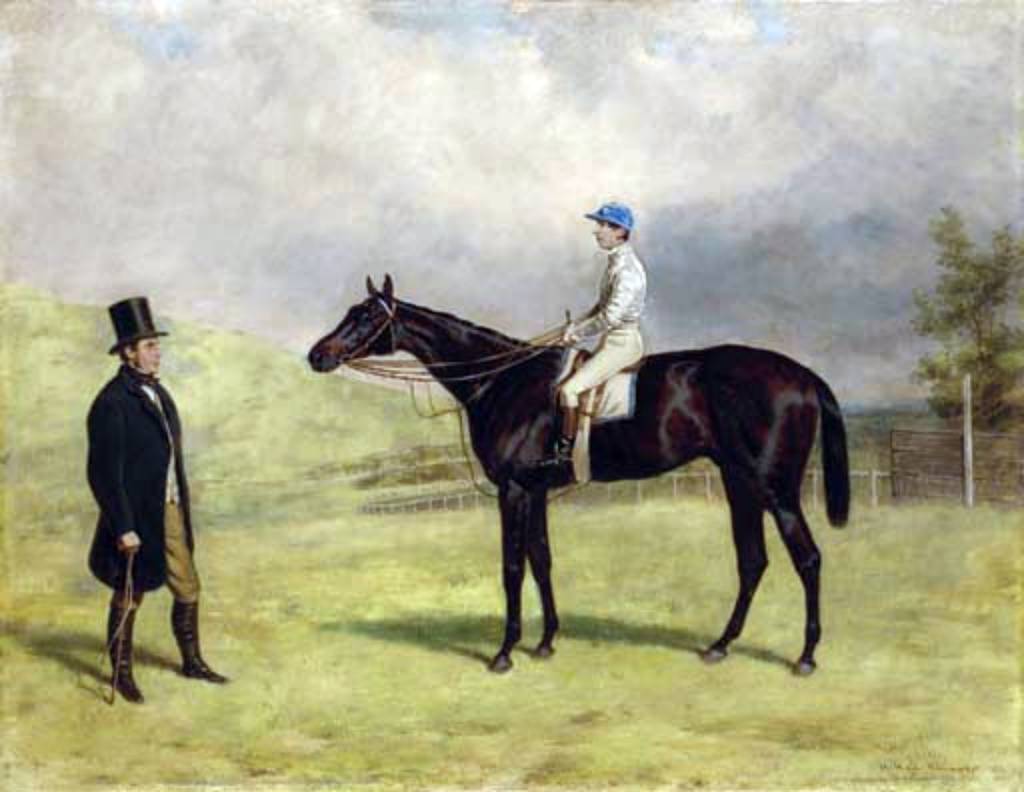
Bacchus, with jockey up, and his trainer Captain James Machell - painted by Harry Hall, Newmarket 1863
As the timeline for Kentford village shows - http://myweb.tiscali.co.uk/kentford22/timeline.htm - from at least 1877 Machell was one of the major landowners in Kentford, and records have it that he owned both Kentford House and Chain Farm, which later became the stud farm for George Alexander Baird (now called Meddler Stud).
Saturday 12 April 1879, Bury Free Press, Suffolk
TO SERVE MARES THIS SEASON AT FIVE GUINEAS EACH.
"CHANDOS," BY "Oxford," out of "Isis" dam, The property of Capt. J. O. Machell, Chain Farm, Kentford, near Newmarket. For particular apply to Mr. J. Jewitt, the Trainer, Kentford House, or the Groom.
During his riding career James Joseph Jewitt had frequently ridden for Machell and it was his remembrance of him that after retiring from riding in 1875 Machell put him in charge of training his steeplechase and hurdle horses at Kentford. Jewitt transferred to Bedford Cottage stables in 1880, succeeding Joseph Cannon and taking up training of flat-racehorses with remarkable success. He died at Bedford Cottage on 11th November 1899.
_1900_Probate.jpg)
In 1892 after a bout of ill health Machell sold Bedford House, Bedford House Stables and Bedford Cottage to Colonel Harry McCalmont. Machell died in on 11th May 1902, aged 64.
_1902_Probate.jpg)
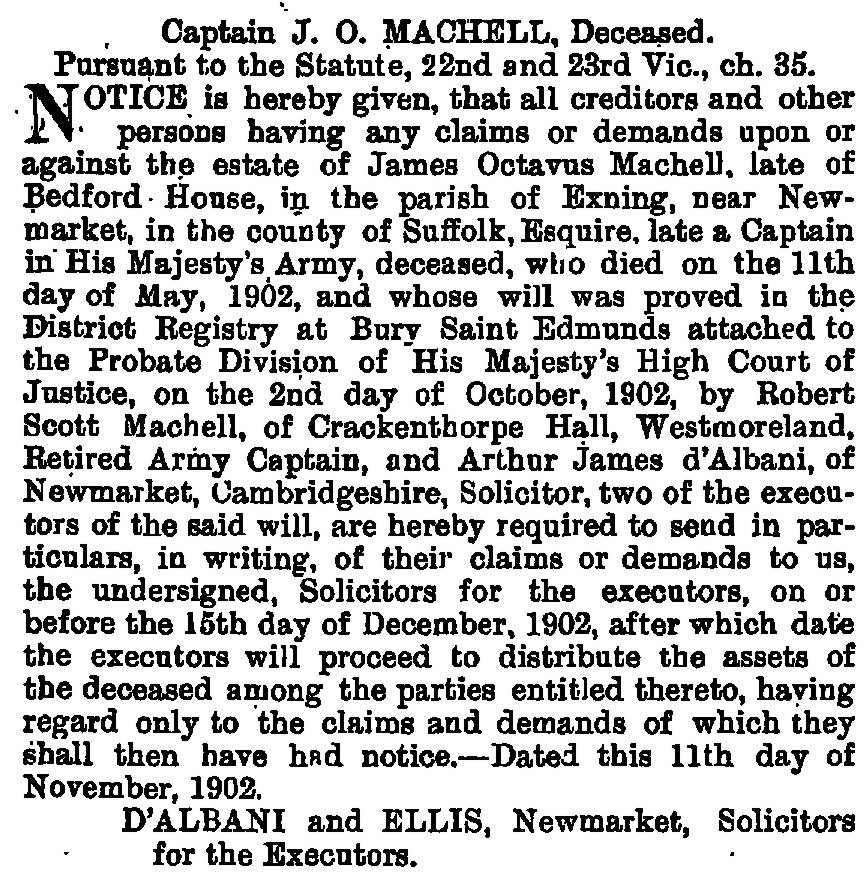
- Further details about Captain James Octavius Machell can be found
Newmarket Local History Society's web site:-
 http://www.newmarketlhs.org.uk/personalities9.html
http://www.newmarketlhs.org.uk/personalities9.html
-
Joseph Cannon
- The son of Thomas Cannon and Harriett (neé Townsend), Joseph Cannon was born in Eton, Buckinghamshire in 1849.
He clearly took an early interest in Newmarket and racing; as he can be seen on the 1861 census in St Mary's Square visiting trainer Thomas Preece.
He first appears here as a trainer in Bedford Cottage, being listed in White's Directory of 1874. In 1880 James Jewitt transferred here from Kentford and Joseph moved onto Primrose Cottage - No.38-40 High Street, training for Lord Rosebery. By 1888 he'd moved on again and was at the Clifton House training establishment on the Terrace in Newmarket High Street. Then in 1896 he can be seen at Lordship farm, on the London Road in Dullingham, where he died in March 1933 at the age of 84.
- One of his sons was another Joseph, and it can be quite confusing differentiating between the two trainers in various reports - but his
son's full name was Joseph Henry Cannon - J.H. Cannon.
Born in Newmarket in 1877, he started his career in training as an assistant with his father. Subsequently he became assistant trainer to the Hon. George Lambton at next door Stanley House.
In 1920 J.H. started training on his own account, this time at his father's stable at Lordship farm. In the previous year though he'd had a bad motorcycle accident at Attleborough in Norfolk, which he never fully recovered from and he died at Dullingham on 18th April 1922.
The Scotsman
Aberdeen Journal
Monday 04 August 1919
Mr Joseph Cannon, jun., head man at Stanley House Stables, was motor cycling home after a holiday on the Broads when his cycle fell, and sustained concussion and sprained thumb, and instep. His condition on Saturday was improved.
Yorkshire Post and Leeds Intelligencer
DEATH OF NEWMARKET TRAINER.
Wednesday 19 April 1922
Cannon, junior. well-known trainer, died at his residence, Lordship Farm, Newmarket, at 2 a.m. yesterday morning, following pleurisy.
Had never really recovered from motor-cycle accident last year. his forty-sixth year, was the eldest surviving son of Joseph Cannon, senior, whom assisted for a number of years.
Subsequently was appointed assistant trainer the Hon. George Lambton at Stanley House. Newmarket, and quickly proved himself adept, particularly the training two-year-old.
During the war served in the Army, but demobilisation again took his duties at Stanley House.
1920 Cannon started training his own account, his principal patron at that time being Mr. O. Langley, whose colt Pride of Ulster, proved such consistent performer last season.
The back-end of last year Mr. W Raphael sent him several horses to train, and recently Monday last at Kempton won race for him with the three-year-old.
Cannon, who was a first cousin the famous ex-jockeys Mornington and Kompton Cannon, married a daughter of Mr. A. B. Sadler, the well-known Newmarket trainer, but there is no issue.
Northern Whig, Antrim, Northern Ireland
Monday 24 April 1922
FUNERAL OF J. H. CANNON. JUN cremated remains Mr. Joseph Henry Cannon, trainer, enclosed plain casket, witboui inscription, were interred in Newmarket Cemetery yesterday morning.
-
George Alexander Baird & Bedford Lodge Stables
- George Alexander Baird was born on 30th Sep 1861 at Stichill, Co. Roxburgh.
He became known as 'The Squire' and was a wealthy British racehorse owner,
breeder and the most successful amateur jockey of his day. Because
his trustees disapproved of his association with horse racing he rode
under the assumed name of 'Mr. Abington'.
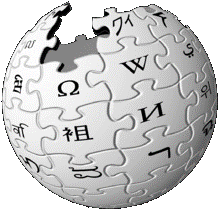 https://en.wikipedia.org/wiki/George_Alexander_Baird
https://en.wikipedia.org/wiki/George_Alexander_Baird
Baird had inherited his family fortune and started to buy racehorses with Tom Cannon (Lester Piggott's great-grandfather) as his adviser.
[many thanks to Newmarket historian Joan Shaw for this image]
In April 1891 Baird became another of the many male conquests of the Victorian socialite Lillie Langtry, following her association with the then Prince of Wales, later to be King Edward VII. Though physically slight, uncouth and socially outcast, Baird was an obsessive and brutish man and frequently beat Lillie. On one occasion in autumn 1891 he beat her so severely that she ended up in hospital for two weeks. To everyone's amazement at the time she refused to press charges, and George pacified her by giving her a steam yacht, which she named 'White Ladye' and £50,000 to pay the ship's crew … to others though the yacht was always known as the 'Black Eye'.
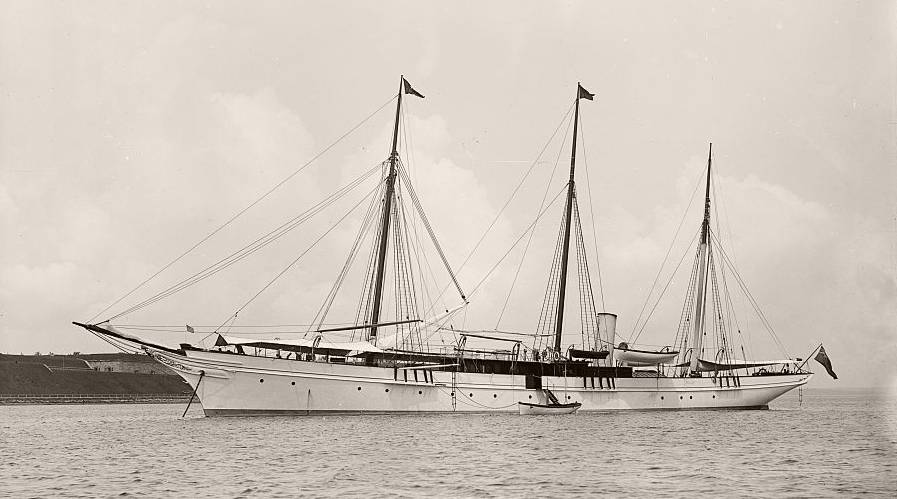
Lillie Langtry's White Ladye Steam Yacht
White Ladye - Steam Yacht
White Ladye was a steam yacht owned by the actress Lillie Langtry, built in 1891 by Ramage & Ferguson of Leith from a design by W C Storey; 3 masts; length 204 ft; breadth 27 ft; 142 hp steam powered. She was initially owned by Lord Ashburton and named Ladye Mabel, but came into Langtry's possession soon after as a gift from George Alexander Baird, and renamed the White Ladye.
In 1893 Langtry leased the vessel to Ogden Geolet who used it until his death in 1897. It was then sold at auction to John Lawson Johnston the 'inventor' of Bovril and remained in his ownership until his death on board at Cannes France in 1900. In 1902/3 she was recorded in the Lloyd's Yacht Register as being owned by shipbuilder William Cresswell Gray, Tunstall Manor, West Hartlepool and remained so until 1915. Following this the Lloyd's Register records that she became French trawler La Champagne based in Fécamp and was broken up in 1935.
-
Baird also acquired Chain Farm from Machell, adjacent to Kentford House, which he used
as a stud farm.
During his lease of Bedford Lodge stables Baird employed Martin Gurry as his trainer, but Gurry found him difficult to work for and he was eventually replaced by Charles Morton in 1888, although the dispute with Gurry over his contract would not be settled by Baird until 1890. Gurry used the money he received from Baird to build a stable in Newmarket from where he trained for 27 years, naming the establishment 'Abington Place' - No.42-44 Bury Road (the gateway of which is a listed property, designed by John Flatman).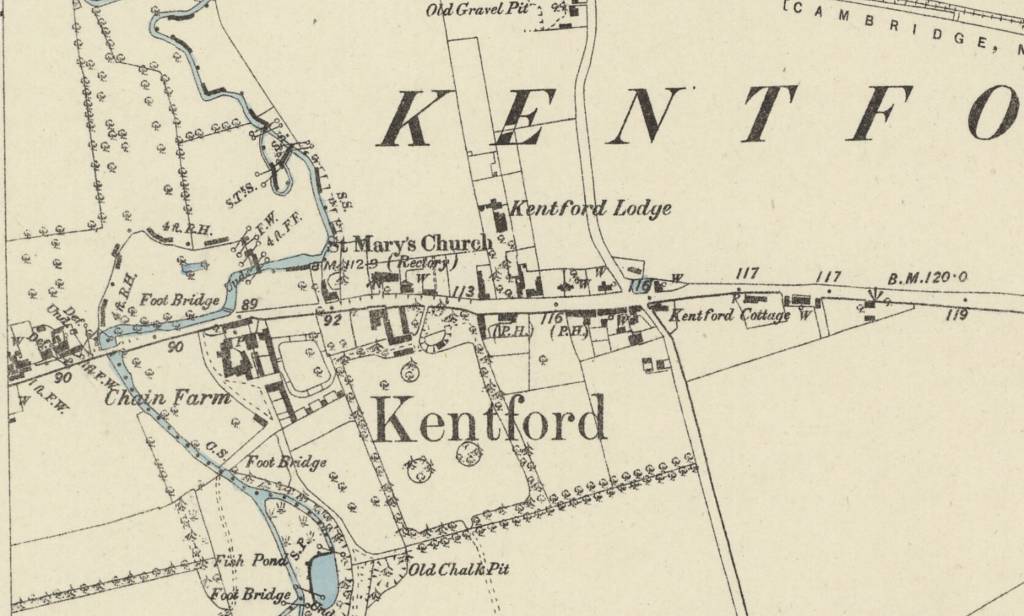
Kentford Map 1884
[Reproduced with the permission of the National Library of Scotland]
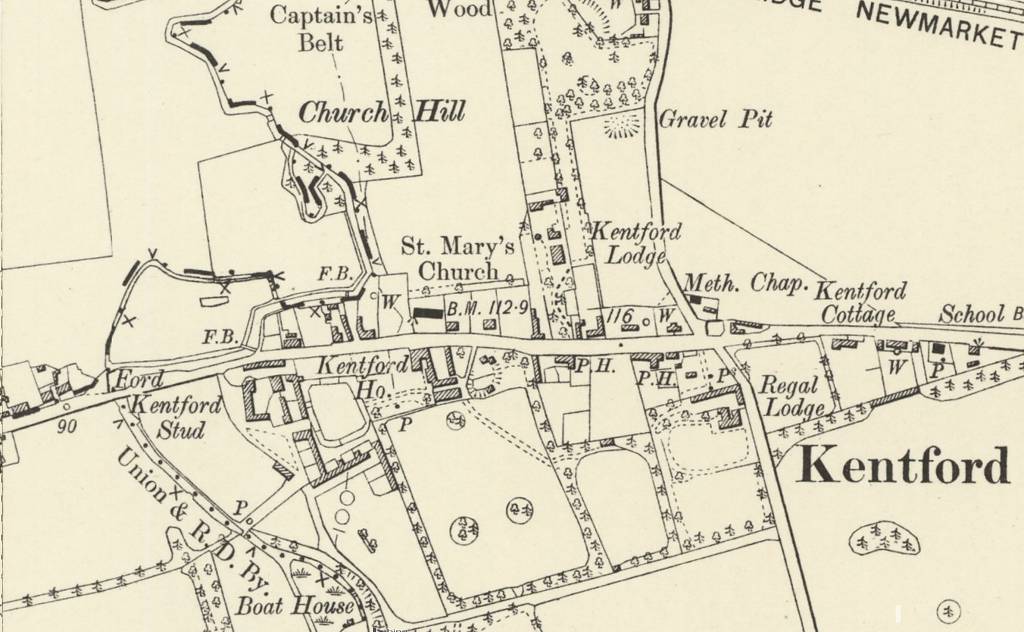
Kentford Map 1901
[Reproduced with the permission of the National Library of Scotland]
[many thanks to Newmarket historian Joan Shaw for this image]
Abington Place and Abington Place Stables - British Listed Building Details:-
http://www.britishlistedbuildings.co.uk/en-505811-abington-place-and-abington-place-stable
-
Morton lasted at Bedford Lodge until 1892, to be replaced by Joe Cannon, younger
brother of Tom. Charles Mowbey was Baird's general manager and Jack
Watts his retained jockey.
Baird became interested in prize fighting after seeing bouts at a hostelry in Newmarket. Prize fighting being illegal at the time, Machell extended the house around 1885 to provide additional accommodation, including a boxing room for Baird who invited prize fighters to matches there.
Lord William Cansfield Gerard, 2nd Baron Gerard, sold Moulton Paddocks to Baird in 1892 and he moved his stud from Kentford to there. It was thought that he would also move his Bedford Lodge operation to Moulton Paddocks, but events conspired to prevent that.
It was in March 1893 that Baird went on a drunken tour of the night spots of New Orleans. Becoming Very drunk and refusing to stop, he caught a chill, which developed into pneumonia and he died shortly after at the St Charles Hotel on Saturday 18th March 1893, aged only 31.
March 20, 1893
Democrat and Chronicle from Rochester, New York · Page 1
SQUIRE ABINGDON DEAD.
Mitchell's Friend and Backer Succumbs to an Attack of Pneumonia.
New Orleans, March 19. Squire Abingdon, the rich Englishman who came here with Charley Mitchell and Jim Hall two weeks ago, and who was one of the most famous sports in Great Britain, died at St. Charles Hotel yesterday morning of pneumonia.
When the squire came here from New York with the Hall and Mitchell party he was in the very best of spirits and in splendid health, with quick, elastic step and a bright, ruddy face.
He came in excellent condition for a long stay, engaged the best rooms in the hotel, began to open wine immediately for all for whom he took a liking, and spent his money right and left for wine and women.
He found New Orleans very fast in a sporting sense, and he cut out a pace that all who were with him had to follow except Hall.
On the night of the fight he was selected to go into the corner with Hall, not because he was thought to know much about handling a man, but simply for the honor of having been in the corner.
He wore nothing but a loose undershirt, as did the other seconds.
It was rather warm during the early part of the evening, but before the fight began it had changed considerably, and there were many dangerous draughts whizzing through the big pine building.
The squire handled the ice and bottles in the corner and made himself generally useful until the fight was over and Hall had been taken back to his room.
After the defeated pugilist had been escorted back to the hotel the entire party went out for a lark, and a general round of dissipation was begun, in which Jim Hath and the squire played the leading parts, and which did not end until the squire broke down and had to go to bed.
His illness at first was not supposed to be of a serious nature, and was regarded merely as a cold resulting from dissipation.
However, a physician was called in and the sick man had every possible attention.
He himself didn't believe that he was very badly off, and he was so confident that he would be up in a day or two and able to go East that he insisted that Mitchell should start on ahead of him for New York, the Western trip, with Bat Masterson, having been abandoned.
Mitchell left with Hall and the squire expected to meet him in time to sail on the Majestic on Wednesday.
The Majestic will carry back to England the dead body of the squire, and his sorrowing friends.
George Alexander Baird, who was 31 years old at the time of his death, was one of the best-known characters of the English sporting world, where he was generally referred to as " Squire Abingdon."
Possessed of great wealth he was enabled to gratify his tastes for horseflesh and pugilism to the fullest extent.
He was a son of a wealthy Scotchman and a descendant of Sir David Baird, a well-known English general.
His relatives are among the most respected people in Scotland, and the family name is one of the most ancient in that country.
The squire was the owner of valuable property in London, Liverpool, Yorkshire, and other points, and his fortune is estimated from $3,000,000 to $5,000,000, and his income was set down at $300,000.
His chief hobby in the sporting line was the turf, of which he was an enthusiastic and lavish patron.
He maintained magnificent training quarters at Newmarket and owned a number of the finest brood mares in England.
He was admitted to be the best gentleman rider in England and by many was adjudged to be the superior of any living professional jockey.
He once defeated Tom Cannon in a close finish and also won a large number of the leading gentlemen's races.
Friday 14 December 1894 , Chelmsford Chronicle , Essex, England
CHAIN FARM, KENTFORD.
About Half a Mile from Kennett Station and Miles from Newmarket. Messrs. NEWMAN & NEWMAN Have received instructions from the Trustees of the late G. A. BAIRD, Esq., in consequence of the expiration of the lease.
Indianapolis News, Marion County, 21st March 1893
-
Frederick Arthur Stanley, the 16th Earl of Derby & Bedford Lodge Stables
- later to become Shalfleet & Highfield Stables - Highfield Stables, Newmarket - British Listed Building Details:-
http://www.britishlistedbuildings.co.uk/en-431612-highfield-stables-newmarket-suffolk
Highfield Stables, Newmarket
Grade: II
Date Listed: 9 October 1994
English Heritage Building ID: 431612
'the trainer Harvey Leader renamed the Stables 'Shalfleet', then, in 1960, formed new stables at the north east end of the site, for which he retained the name Shalfleet Stables, while his former accommodation was re-named Highfield Stables when occupied by the trainer Fred Winter in 1963.'
-
The Honourable George Lambton
- George Lambton was born on 23rd December 1860 in London. He was the fifth son of of George Frederick D'Arcy, Earl of Durham and Beatrice Frances (neé Hamilton).
He joined the army and became a 2nd Lieutenant in the 2nd Derbyshire Militia in 1880 and Lieutenant in the 3rd Battalion of the Sherwood Foresters, but his heart resided in the stable.
His Cambridge University Alumni record states - ‘At Eton he was rather too near Ascot, and at Cambridge rather too near Newmarket.’
As detailed above, Lambton trained for Frederick Stanley, Lord Derby, in Bedford Lodge Stables from 1893 until he moved to bext door Stanley House Stables in 1903.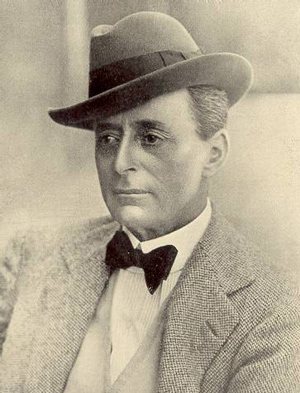
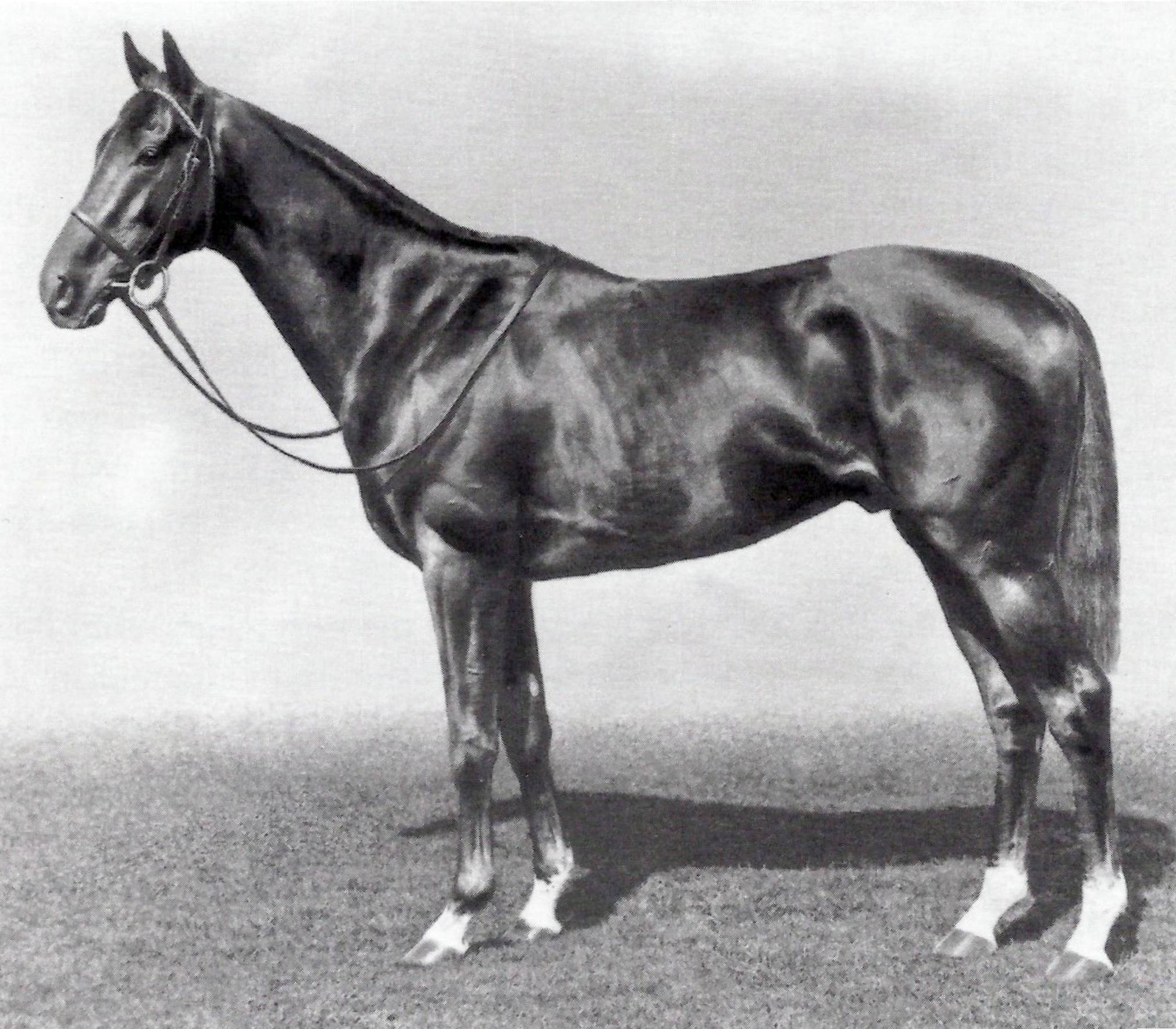
Hyperion
The next Lord Derby, Edward Stanley, took over running both Stanley House and Bedford Lodge stables after his father's death in 1908. Around the same time George married Cicely Margaret Horner and moved across the road to live in Mesnil Warren - No.40 Bury Road.
In total Lambton trained 13 British Classic winners and was named England’s leading trainer in 1906, 1911 and 1912. Of course his greatest success was the legendary chestnut stallion Hyperion, who won the Epsom Derby and St Leger Stakes in 1933. Lambton retired as Lord Derby's trainer in 1933 and continued as a public trainer.
George died on 24th July 1945 at Mesnil Warren, a few days after his retirement from training.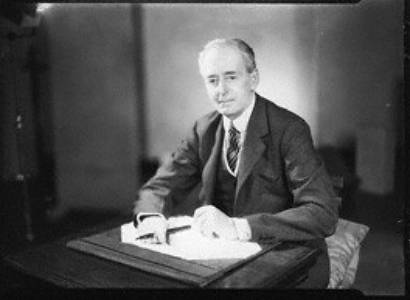
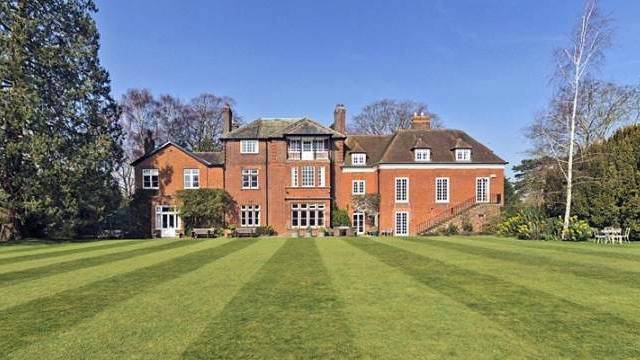
Mesnil Warren
_1945_Probate.jpg)
His grandson, another George Lambton, born 1962, and a former mayor of Newmarket, is an active director of Jockey Club Estates Ltd.
-
Captain Robert Henry Dewhurst
-
Robert was the son of cotton manufacture & merchant George Charnley
Dewhurst and Elizabeth Margaret (neé Whigam). He was born at the family home
of Beechwood Hall in Lymm, Cheshire on 31st January 1862. He joined the Militia
and attained Second Lieutenant in the 2nd Royal Cheshires on 13th March 1880.
By 26th August 1891, when he resigned his Commission, he was a Captain in the
4th Hussars.
He began to ride as a very small boy and hunted with the Cheshire Hounds. When he joined the 4th Hussars in 1884 they were then quartered at Norwich. Though terribly overweight, he was nevertheless ambitious enough to want to take part in the regimental races and when the time came, he got-off a great deal of weight. His first appearance on a racecourse was in the year 1885, when by winning the Welter Cup on Lucifer, this made him keen to continue.
The regiment moved to Scotland where he continued to have great success riding in many races, then in 1887 they went to Cork and Robert found that Ireland was an ideal country for anyone devoted to hunting and steeplechasing.
When the 4th Hussars moved on from Ireland Robert decided to settle down in the country, and found a place at Clonsilla, about eight miles from Dublin. There were training stable on each side of him - Mr. Leonard Sheil and Mr. J. J. Maher and Robert had horses in both establishments. Unfortunately in 1899 Mr. Sheil was killed while riding in the Meath Hunt Cup and as a consequence Robert took over his stables.
At this time there was much less money to be won racing in Ireland than in England, and as a consequence many horses were being sent over to this country. Due to the difficulty and inconvenience of continually transporting them, in 1902 Robert took up residence here in Bedford Lodge Stables, still keeping on Clonsilla, which was then managed for him by Mr. Maxwell Arnott.
- Captain Dewhurst died on 11th December 1936 at Clonsilla and is
buried at St Mary's churchyard, Lymm in Cheshire.
-
Lady Ludlow - Bedford Lodge
- Bedford Lodge was leased in 1925 to Lady Ludlow
(Sir Julius Wernher's widow; Alice, later Lady Ludlow, after she married Henry Ludlow Lopes, 2nd Baron Ludlow in 1919 and widowed a second time after he died in
1922).
Bedfordshire and Luton Archives and Record Service
Luton Hoo Estate Archives
LHE/497 Sept.1925 - April 1930
Contents:
File of correspondence and papers concerning the lease by Lady Ludlow of various properties in Newmarket (including Bedford Lodge) and the acquisition of Warren Towers. Includes lease of Bedford Lodge 1925, draft agreement for sale of Warren Towers to Lady Ludlow 23 Nov.,1926, and papers relating to alterations to Warren Towers.
-
William Maxwell Aitken, Lord Beaverbrook - Calvin House
- In 1928 Bedford Lodge was purchased by William Maxwell
Aitken, Lord Beaverbrook, who (as a protest against what he
considered was a corrupt racing community) changed the name to Calvin
House after the great protestant reformer.
Yorkshire Post and Leeds Intelligencer
Thursday 12 January 1928
RACING ITEMS
Bedford Lodge, a well-known Newmarket residence, has been sold to Lord Beaverbrook, who has a number of well-known horses in training with C. Leader.
Bury Free Press
Saturday 31 March 1928
NOTES OF THE WEEK
Lord Beaverbrook, who adventured in racehorse ownership and established a stud few years ago, has bought Bedford Lodge, Newmarket, with the object of having permanent home at the headquarters of the Turf. Lord Beaverbrook has a number of horses in training with C. Leader and J. Watts.
Beaverbrook's Calvin House is shown in the Country Life magazine 17th May 1930:-
http://www.rostronandedwards.com/Shop/Country_Life_Magazine/6988
- He subsequently sold the house at the end of 1931, and in 1932 Harry
Wragg moved in.
Bury Free Press
Saturday 28 November 1931
NOTES OF THE WEEK
Calvin House, Bury Road, Newmarket, the property of Lord Beaverbrook, has been sold Messrs. Seymour Cole and Co., Ltd.
- In 1931 Seymour Cole & Co. Ltd. was a house furnishers /
movers / estate agents in Newmarket - they're shown in the 1926
& 1936 Newmarket Directories at No.5, 6, 7 & 8 Buckley
Terrace in Old Station Road. [This building is now the Montaz
Restaurant, Newmarket Computer Co. Ltd. and All Square Flooring
Ltd. - No.30-No.34 Old Station Road]. Seymour Cole died at the
nearby Rous Memorial Hospital in Newmarket in 1943, but his
business carried on in the town for many years after then and in
1975 had moved to No.30 High
Street.
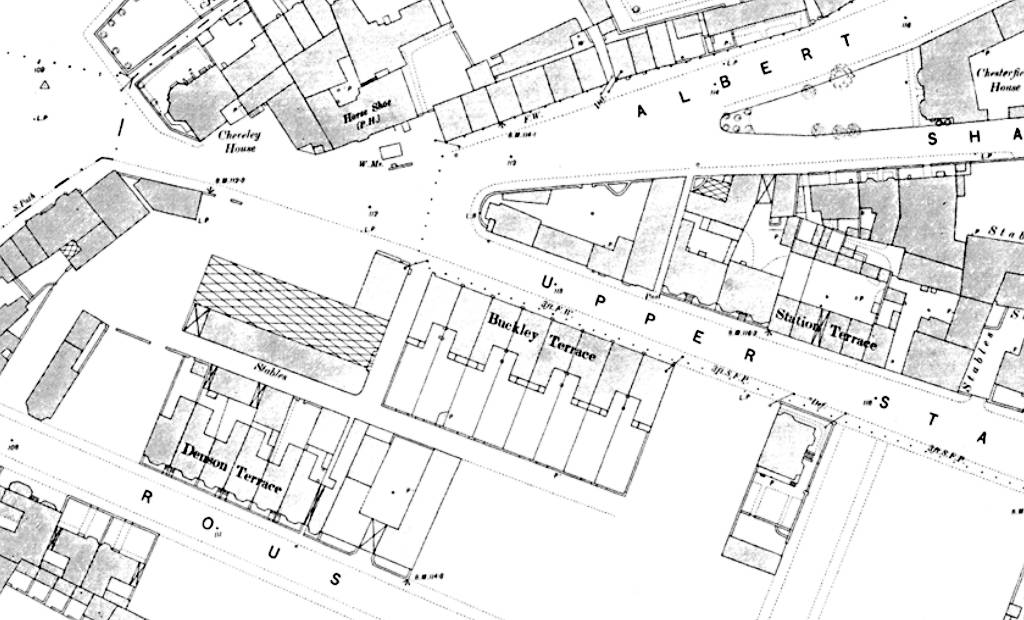
Daily Herald, London
Wednesday 26 February 1941
Beaverbrook ran a racing stable a few years back, he called his Newmarket residence Calvin House. This nearly converted his horses, for their reluctance to take part in racing became almost proverbial. Then, Beaverbrook once had an aeroplane which had John Knox painted on the fuselage! It will take me nearer Heaven now, he thought.
| Bedford Lodge Hotel Grade: II Date Listed: 30 October 2006 English Heritage Building ID: 505821 |
 Bedford Lodge 1886 |
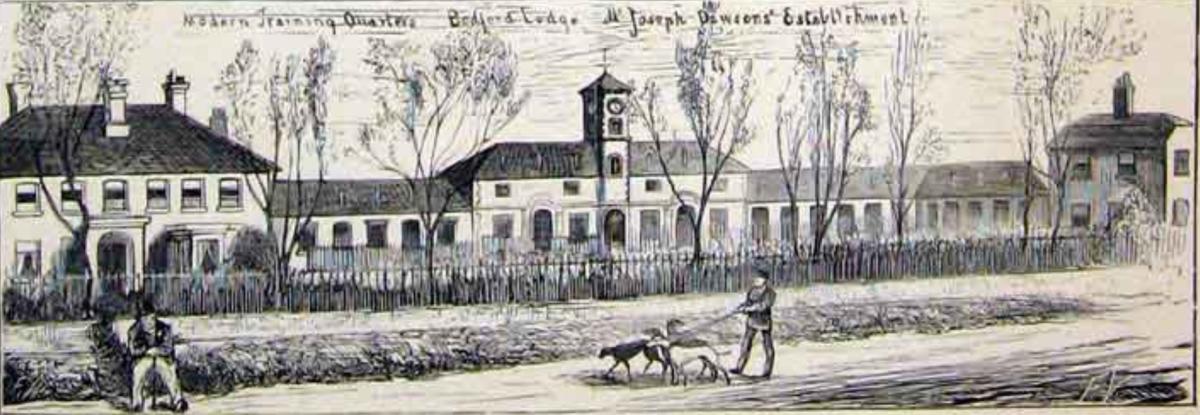 Bedford Lodge Stables c. 1875 |
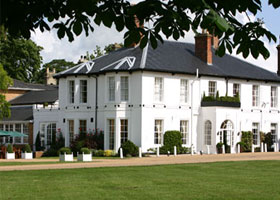 |
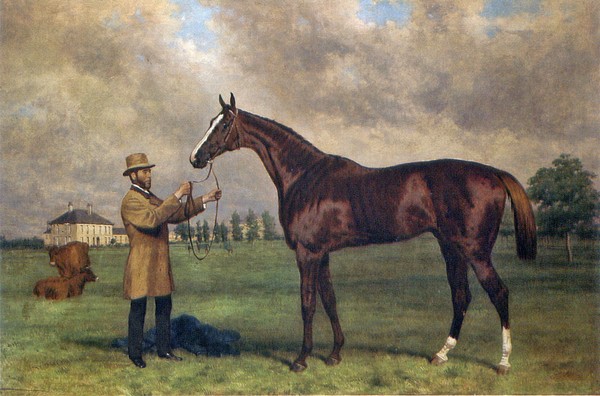 Painting by Harry Hall of 'Prince Charlie' at Bedford Lodge Stables Newmarket, 1874 [inset shows Bedford Lodge Hotel in 2013] |
| In
the summer of 1893, Lord Derby leased Bedford Lodge stables from the executors of
George Alexander Baird's will and moved George Lambton from
his stables across town at St Mary's Square to take over
here as trainer. Lord Derby also built Stanley House Stables (now Godolphin Stables) - No.25 Bury Road, which had formed part of the Duchess of Montrose's Sefton Stud. This yard was completed in 1903 and Lambton moved in. Lord Derby's son Edward, who became the 17th Earl on his father's death in 1908 continued in racing at Bedford Lodge stables. A succession of trainers followed Lambton at Bedford Lodge, including Captain Robert H. Dewhurst and Harvey Leader, who renamed part of the yard Shalfleet after the colt that won him 16 races, including two Portland Handicaps in 1935 and 1936. When he moved his string into new boxes on the eastern side of the yard he retained the name Shalfleet. In 1963, Classic-winning jockey Fred Winter returned to Newmarket from Gravesend to train at Bedford Lodge stables, which he renamed Highfield after his Kent yard. On his death, the yard was taken over by his son John. Paul Kelleway started his career in 1954 as an apprentice jockey for Doncaster trainer Eddie Magner, but a year later moved his apprenticeship to Newmarket to ride for Harry Wragg. He later switched from flat to jump racing due to weight limitations and had great success. He made the switch back to flat racing in 1977, but this time as a trainer at Shalfleet stables where stayed for 20 years, retiring from training in 1997. Trainer Jeremy Noseda worked for 6 years for John Dunlop at Arundel in Sussex and then 5 years as assistant to John Gosden at Clairhaven in Newmarket. He then joined Sheikh Mohammed's Godolphin stables in late 1993 and started training under his own name in January 1996, initially in California, before returning to Britain in late 1997 to take over from Kelleway at Shalfleet stables. |
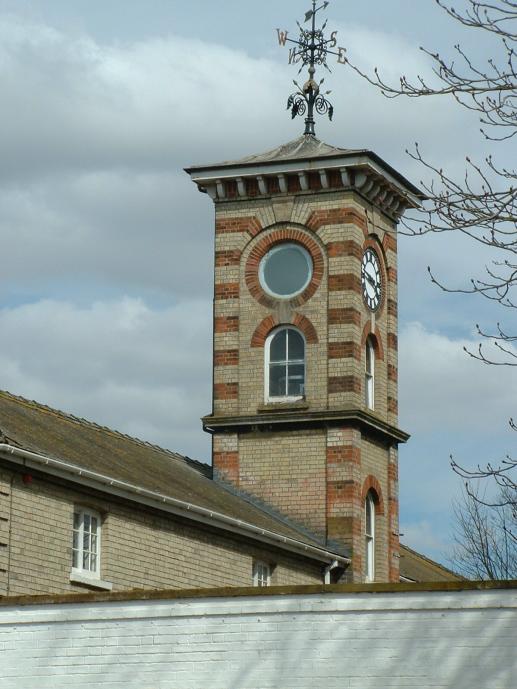 The Clocktower at Highfield Stables |
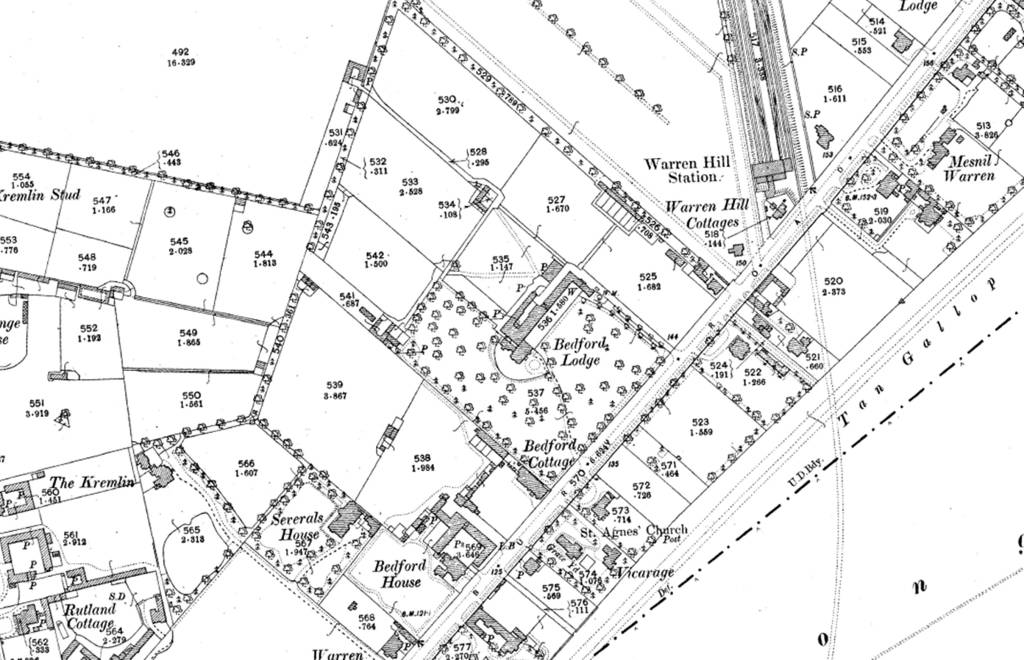 Bedford Lodge 1902 |
|
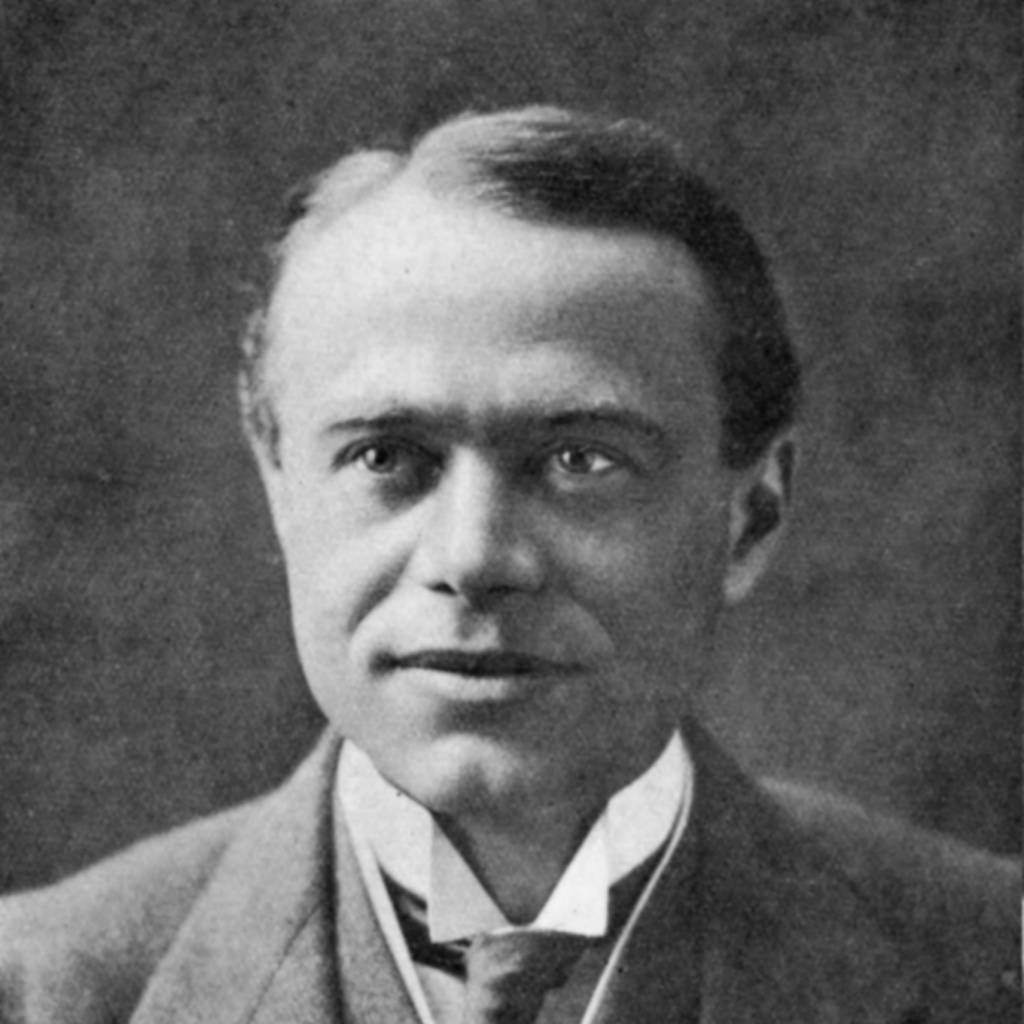
Max Aitken - Lord Beaverbrook |
-
Harry Wragg
-
Harry Wragg, nicknamed the 'Head Waiter', was born on 10th June
1902 in Sheffield, Yorkshire. He became the apprentice jockey to
Colling in 1920 and
went on to be Champion Jockey in 1941.
_1939_Phone_Book.jpg)
As shown by the phone book for that year Harry moved here in 1932, and once again the house was known as Bedford Lodge. Just before then he was listed in the phone book at North Lodge, Cheveley Road between 1924 and 1926, then Vaucluse - No.39 Bury Road between 1927 and 1929 (previously occupied by the jockey George William Archibald). Harry renamed that house Glenavis (which it's still called today) and he stayed there from 1930 until 1931.
The Scotsman
Thursday 18 April 1946
COOK and house-parlourmaid ( friends ) , or married couple as cook and house-parlourman , wanted ; outings together ; good home ; personal references required.
Apply Sirs Harry Wragg . Bedford Lodge , Newmarket , Suffolk .
When he retired from riding in 1947 he moved from Bedford Lodge and began training in his own right at Gurry's former stables in Bury Road; Abington Place Stables - No.42-44 Bury Road. In 1958 Harry's son Geoff joined him as a partner in Abington Place and took over the trainer's licence after Harry retired in 1983. Harry died two years later on 19th October 1985. Geoff subsequently retired in 2008 and Abington Place is now run by Jane Fiona Chapple-Hyam.
-
Robert Weston Colling
-
Robert (Bob) Weston Colling was born in Marske-By-Sea in the North Riding of Yorkshire in 1872. He started training with two yards full of horses in Yorkshire, and in the 1911 census can be seen at Spigot Lodge in Middleham.
Colling came to Newmarket in 1917 and took up training at Waterwitch House, before subsequently moving here to Bedford Lodge Stables in 1920 and was listed at Bedford Cottage in the Phone Books until he died on 26th May 1960.
Cambridge Independent Press
Friday 28 December 1917
RIDING OUT FATALITY. Newmarket Stableman's Unaccountable Death. Mr. E. R. Ennion, Deputy Coroner for Newmarket, held inquest on Friday afternoon for the death of William Mallett ...
... Robert Weston Colling, trainer of racehorses at Waterwitch House. Newmarket, gave evidence that he had employed Mallett stableman.
Leeds Mercury
Hull Daily Mail
Wednesday 10 November 1920
The ex-Middleham trainer, R. W. Colling, has changed his quarters at Newmarket. He has vacated Waterwitch House for Bedford Lodge.
-
Colling was replaced in 1933 by Harvey
Leader at Bedford Lodge stables.
Hull Daily Mail
Wednesday 28 December 1932
R. W. Colling, the Newmarket trainer, has vacated the Bedford Lodge stables, and has taken over the Sefton Lodge training establishment.
Harvey Leader, who formerly trained at the Beechwood stables Exning, near Newmarket, now occupier.
_1962_Probate.jpg)
-
Harvey Cliff Leader - Shalfleet Stables
-
Harvey was born on 16th September 1892 in Newmarket. He was the youngest son of Thomas Leader,
from Wroughton in Wiltshire - who'd come to Newmarket and set up a training
yard at Wroughton House in Old Station Road (then known as Upper Station Road).
Further details about him and Harvey's four brothers can be found on the page 'The
Leader Family'.
After a successful early career as a jockey, Harvey began training at Beechwood Stables in Exning in 1918, winning the St Leger with Caligula in 1920. He also trained National Hunt horses, winning the Grand National in 1926 with Jack Horner. Amongst his many horses he trained bay colt Diomedes and his son Shafleet, after which he renamed the stables here.
In the 1922 phone book he's shown living at Kennett, but is again listed at Beechwood in Exning in the 1926 Newmarket Street Directory.
He seems to have liked travelling quite a lot; as there are numerous travel records for him:-
1931 - Round Cruise
1933 - Buenos Aires, Argentina
1954 - Kingston, Jamaica
1955 - New York, USA
1958 - Durban, South Africa
1959 - Cape Town, South Africa
1960 - Round Voyage
Harvey's father Tom died at Wroughton House on 5th February 1920, aged 72.
Harvey left Beechwood in Exning at the end of 1931, moving some of his horses to what was by then his brother Tom's stables at Wroughton House. The following newspaper article shows that Harvey was training in Bedford Lodge in 1933:-
Northern Whig, Antrim, Northern Ireland
Friday 29 September 1933
NEWMARKET SALES
Harvey Leader, the Bedford Lodge trainer, submitted ten lots, most of which were bought in Ireland at the Dublin sales.
In December 1935 he negotiated to purchase Clarehaven House stables from Captain Victor Gilpin, but this fell through and Harvey stayed at Bedford Lodge.
Yorkshire Post and Leeds Intelligencer
Tuesday 10 December 1935
CLAREHAVEN HOUSE NOT SOLD
Negotiations for the purchase of Clarehaven House, the famous racing establishment at Newmarket, by Harvey Leader, have fallen through.
Clarehaven House was recently vacated by Victor Gilpin, who is now training at Michel Grove, Sussex. It is expected that Leader will continue to train at Bedford Lodge, at Newmarket.
In November 1945 Harvey also took over Wroughton House:-
Western Mail , South Glamorgan
Tuesday 06 November 1945
RACING TRAINERS NEW QUARTERS Harvey Leader has taken possession of the Wroughton House Stables. Newmarket, formerly occupied his father, the late T. K. leader.
His team moved into their new quarters on Monday when they returned from exercise.
This particular newspaper report gets it slightly wrong; as it was his brother Thomas Richard Leader who'd died on 24th June 1945, leaving Wroughton House to Harvey. In December 1950 Harvey went of vacation in Switzerland leaving his assistant trainer, Tom Waugh, in charge of Wroughton House. Tom eventually took over there fully in 1956.
When Harvey retired in 1971 he handed Shalfleet over to his assistant Gavin Pritchard-Gordon. Harvey died just one year later in March 1972 in Newmarket.
- One of Harvey's best known jockeys was Alfred James 'Alfie'
Westwood. He rode mainly for Harvey during his career and beat
Gordon Richards when riding his first winner; Ivernia, at
Newmarket’s Guineas meeting on 1st May 1952.
After two years of National Service, Alfie returned to racing as a lad with trainer Reg Day at Terrace House - No.125 High Street. Six years later he joined Harvey here at Shalfleet stables. It was Harvey who persuaded him to resume his riding career.
For the last 15 years of his life Alfie was among the most popular guides at the National Horseracing Museum, showing visitors around and coaching them on the mechanical racehorse simulator. Alfie sadly died on Sunday, 22nd November 2015 after a short illness. Further details about him can be found on this page https://sites.google.com/site/carverwilliamjockey/westwood-alfie
-
Paddy O'Gorman - Shalfleet Cottage
-
William Gerard 'Paddy' O'Gorman was born in County Cork, Ireland on 27th May 1913.
As detailed in his son Bill's Book 'Racing Horses - About my father's business'
Paddy came to England in 1934.
It's not known when he moved to Newmarket, but according to John & Ena Powney (who live in Shalfleet Cottage now), they say that the house was built in around 1937 and they bought it off Paddy in 1959.
Paddy went to work for Robert John 'Jack' Colling at his Scaltback Stud and got his first training license in 1953. (Jack was the son of Robert Weston Colling).
Paddy died at the age of 56 in Newmarket in June 1969.
[Note from Webmaster - many thanks to Harriet Powney for her and her parents assistance in helping me unravel the many complexities of the Bedford Lodge site. John Powney of course comes from a family tradition in horseracing; with his father Hugh and his grandfather (another John) all being successful jockeys, trainers and himself a stud manager. John was a private trainer for (Sir) David Robinson and was also at one time a Clerk of the Scales. More recently he helped out for many years in the Practical Gallery at the National Horseracing Museum in Newmarket, and is presently enjoying his retirement at Shalfleet Cottage.]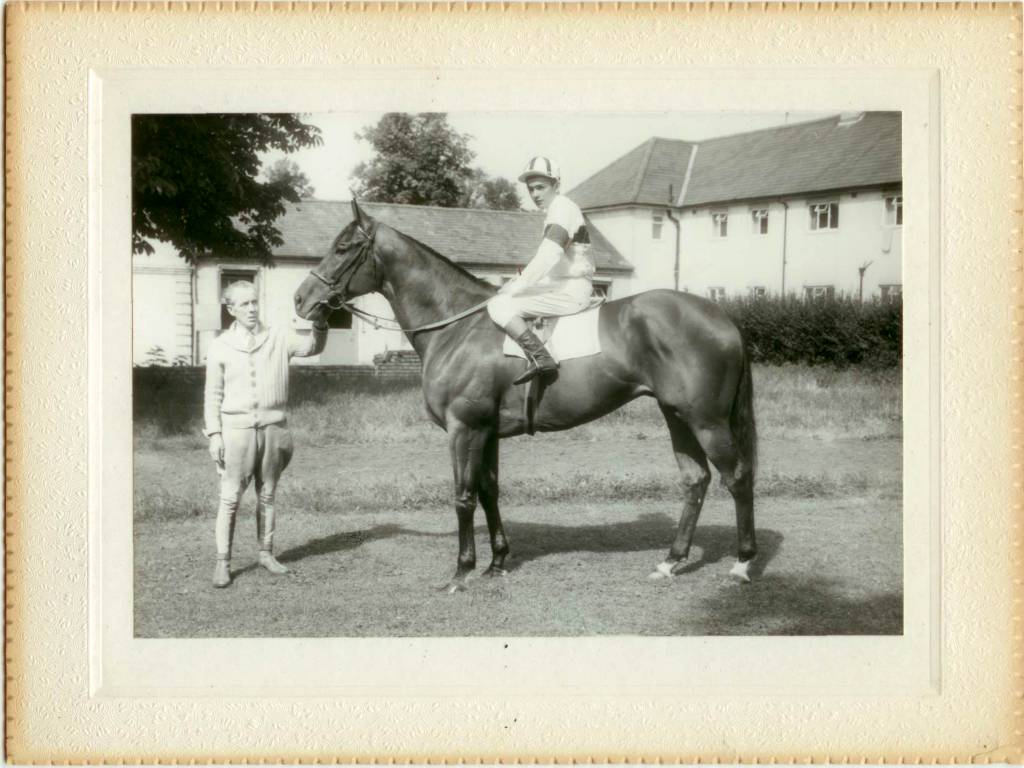
Paddy O'Gorman with King's Stand Stakes winner Majority Rule
The rider is apprentice R. W. (Bobby) Jones who later owned a transport firm and trained at Wickhambrook.
[Many thanks to Bill O'Gorman for this photo]
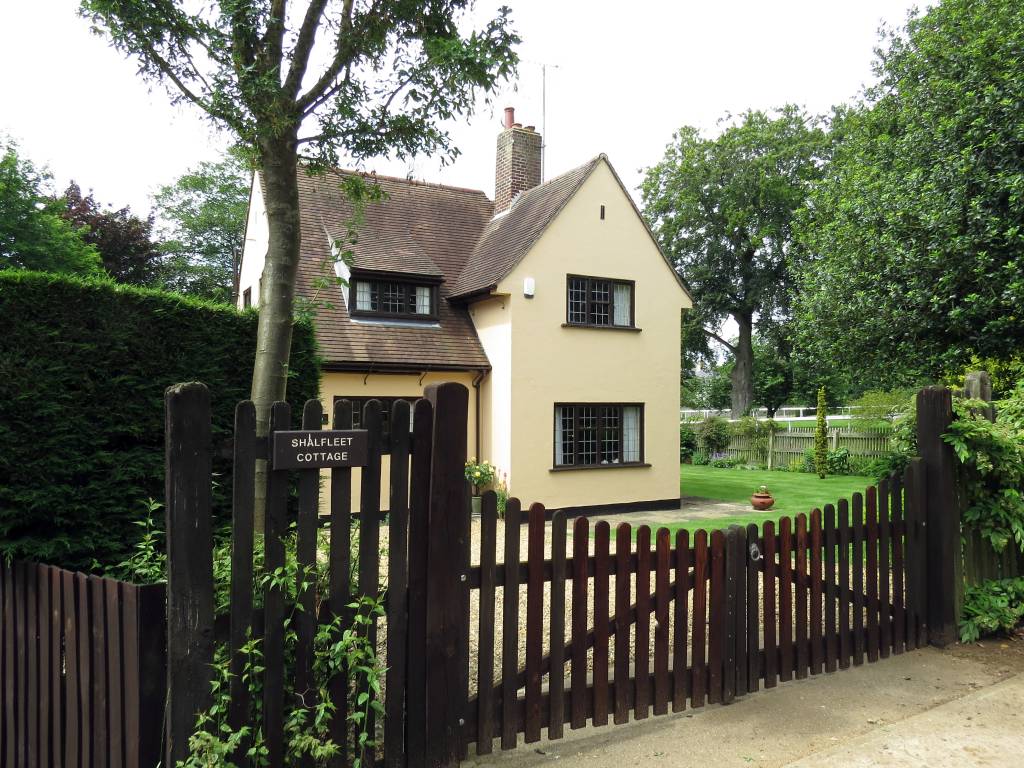
Shalfleet Cottage 2016
extract from The Glasgow Herald - Tuesday 24th March 1981
-
Fred & John Winter - Highfield
-
Frederick Neville Winter - Fred - was born at Feltham, Middlesex in 1894. On the 1911 census he can be seen
as a stablelad jockey, working at Felix
Watmough Leach's Graham Place stables in Newmarket. This same year he won
the Epsom Oaks on Cherimoya and was Champion
Apprentice.
When WWI broke out he was riding for the German National Stud and officials sportingly gave him 24hrs to get out of Germany ... but he didn't make it and spent 4 years in the Ruhleben POW camp, Spandau, Berlin. After he was released at the end of the war in 1918 he found that he couldn't get re-established racing in England, so he moved to Ireland where he met his wife Nancy Flanagan.
In 1926 he returned to England, moving to Hampshire. Then briefly in 1929 he came back to Newmarket, and in that same year he rode Kopi in the Epsom Derby, but suffered a fall. Soon afterwards though he won the 1929 Irish Derby on the same horse, following which he retired as a jockey.
Fred started training at Bredenbury, Longdown Lane in Epsom, then at Treadwell House stables on the Epsom Downs, before moving to Southfleet in Kent in 1941, where he trained with his son John, before finally moving back here to Newmarket in the winter of 1963-4. It was Fred who renamed Bedford Lodge Stables to Highfield.The Derby 1929
Fred's fall on Kopi can be seen at 3:49.
[click on the play button above to start the video]
Shortly afterwards Fred died in Newmarket on 9th July 1965 and his son John took over at Highfield.
_1965_Probate.jpg)
- John Rous Winter was born during his father's short time at
Newmarket, on 4th April 1929. After taking over from him at
Highfield John went on to train a string of winners: Balidar, winner of the Prix de l'Abbaye de Longchamp; Folle Rousse, winner of the Prix Robert Papin; Mehari, runner-up in the Ascot Gold Cup and winner of the Prix Kergorlay; Spaniards Mount, winner of the 1967 Wokingham, Realm, winner of the 1971 July Cup, Double-U-Jay, and Showdown.
John retired as a trainer on 1st April 1991 and in his retirement became a director of Bloodstock & Racehorse Industries Confederation Ltd., a director of the Injured Jockeys Company Ltd., and also a director of East Anglian Seeds Ltd.
John died at the age of 70 after a short illness in Addenbrooke's Hospital, Cambridge on 5th January 2000.
- Fred's other son, another Fred Winter, was one of the most
famous jump jockeys.
 https://en.wikipedia.org/wiki/Fred_Winter
https://en.wikipedia.org/wiki/Fred_Winter
-
Further details about the Winter family can be found on this web site - http://humphrysfamilytree.com/Flanagan/winter.html
- Following John's retirement Highfield became part of Sheikh
Mohammed’s Godolphin racing - that was until 28th August 2014,
when it was announced that Highfield was to be closed and the
horses were to be distributed around other Godolphin or Darley
training yards in the town - the end of an era.
-
Bedford Cottage - Rockfield House
- Bedford Cottage was renamed Rockfield House in 2003 and opened as a 13-room hostel for homeless families,
owned by Forest Heath District Council and managed by Newmarket's Open Door
charity. It was sold in 2010 to next-door Bedford Lodge
Hotel and has recently been converted into a luxury spa.
Note that Bedford Cottage and Bedford Lodge Cottage are not the same - in fact although there's only ever been one Bedford Cottage, on occasions the records have referred to more than one house being called Bedford Lodge Cottage. Hopefully the map below helps in showing where Bedford Cottage is (No.9 Bury Road) and where two of the Bedford Lodge Cottages are now (No.19 & 21 Bury Road).
-
Bedford House Stables
- Bedford House Stables - British Listed Building Details:-
http://www.britishlistedbuildings.co.uk/en-505812-bedford-house-stables-newmarket-suffolk
Bedford House Stables
Grade: II
Date Listed: 30 October 2006
English Heritage Building ID: 505812
- As shown by the various records, during Machell's
time the stables here were known as Bedford Cottage Stables. After
then, although the stables stretched between Bedford House and
Bedford Cottage they seem to be mostly referred to as Bedford
House Stables. Bedford Cottage became an independent residence
within the Bedford House complex.
-
Captain Percy Wentworth Bewicke
- Described as "a notable Newmarket gentleman trainer of long experience",
Captain Percy Bewicke (late of the 15th Hussars) initially had a
very successful career as a 'gentleman jockey' between 1890 and
1903. He started training at Grateley in Wiltshire, where he brought off many
great handicap coups. He was then for a time near Belsay, in
Northumberland, where he had a number of horses owned by the late
Mr. Charles Perkins and moved into Bedford House stables in 1920
where he stayed until about 1928.
As shown in the Phone books, by 1929 he'd moved to Hurst Lodge, Bagshot Road, Sunningdale, Ascot, where he stayed until 1945 when he moved to his final home 12 Howard Place, St Andrews, Scotland. Hurst Lodge became a private school after WWII and includes Sarah Ferguson, Duchess of York as one of its former pupils.
Captain Percy Wentworth Bewicke died on 20th May 1950.
-
John Maurice 'Jack' Clayton - Bedford House
- John Maurice Clayton, better known as Jack Clayton, was born on 8th November 1902 in Westminster,
London. The son of Major Edward Francis Clayton and Jeanne Marie Renee (neé de Fougeres).
His father's family originally came from Northumberland, and one of
Jack's main
claims-to-fame was that in 1929 he tried to auction Housesteads Roman Fort
at Bardon Mill in Northumberland - part of Hadrian's Wall. This
is and was a famous archaeology site and this attempted sale caused a
bit of an uproar - it didn't reach its reserve and eventually he
donated the fort to the National Trust in 1930.
 https://en.wikipedia.org/wiki/Housesteads_Roman_Fort
https://en.wikipedia.org/wiki/Housesteads_Roman_Fort
- Jack's parents moved into next door Severals
House - No. Bury Road just after WWI in 1919, and Jack purchased Bedford House and stables
ten years later in 1929:-
Yorkshire Post and Leeds Intelligencer
Thursday 14 February 1929
Is announced that Bedford House, Newmarket, with tho adjoining stables, has been sold by Captain Percy Bewicke to Mr. Jack Clayton, son of Mrs. Clayton, of Severals House, Newmarket.
- One of Jack's many successes in racing was the career of the trainer Bruce Hobbs.
Bruce crowned his riding career in becoming the youngest jockey ever to ride the winner of the Grand National.
But as he approached his 40th birthday in 1960, his prospects in
his second career as a trainer looked bleak. Boyd-Rochfort, at Freemason
Lodge - No.35 Bury Road, although 73 at the time, showed no inclination to retire, which would have allowed
Bruce to take over the yard. So Bruce decided to quit racing and
became a travelling salesman for
Gibson's saddlers in Newmarket.
But he yearned to be back in the stableyard and shortly afterwards returned as assistant to Jack here at Bedford House stables in 1962. Subsequently after two years here he was appointed private trainer to the television magnate David (later Sir David) Robinson, who had 40 horses at nearby Carlburg stables - No.47-49 Bury Road ... and so the story goes.
 https://en.wikipedia.org/wiki/Bruce_Hobbs
https://en.wikipedia.org/wiki/Bruce_Hobbs
- Bruce wasn't the only trainer to work for Jack - both Noel
Cannon (further details about him below) and Norman Bertie
trained here at Bedford House.
Jack also continued his family's association with Royalty - most particularly with his father's close friend Princess Mary. The following newspapers articles are just two of many that record the close association between the Princess Royal, Norman Bertie and Bedford House stables.
[Note for those interested - the title 'Princess Royal' is a lifetime title - and hence as Princess Mary didn't die until 1965, no other British Princess was entitled to have that position until after that time. So our present Queen was never known as the Princess Royal.]
 https://en.wikipedia.org/wiki/Princess_Royal
https://en.wikipedia.org/wiki/Princess_Royal
Gloucester Citizen
Friday 09 January 1948
PRINCESS NOW RACEHORSE OWNER
Princess Elizabeth, who has called her wedding gift racehorse Astrakhan, is the third member of the Royal Family who owns racehorses.
The King has several horses with Capt. Boyd Rochfort Newmarket, and a few with Noel Murless at Beckhampton.
The Princess Royal's horses are trained by Norman Bertie.
The Duke of Gloucester registered racing colours, but in recent years has not owned a racehorse.
Yorkshire Evening Post
Friday 29 January 1954
PRINCESS AT NEWMARKET
The Princess Royal visited Newmarket today and inspected her horses trained by Norman Bertie at the Bedford House stables. The Princess Royal owns four horses in training at Newmarket, the three-year-olds Oltremarino and Swallow Dive and two two-year-olds.
One of Norman Bertie's major successes working for Jack Clayton came in the year of the Royal Coronation of Elizabeth in 1953, when the bay stallion Pinza won the Epsom Derby beating the Queen's own colt Aureole.
Pinza: bred by Fred Darling, owned by Victor Sassoon, trained by Norman Bertie and ridden by the twenty-five times Champion Jockey Gordon Richards.
 https://en.wikipedia.org/wiki/Pinza
https://en.wikipedia.org/wiki/Pinza
The Queen was coronated on 2nd June 1953 and four days later the Epsom Derby was on Saturday 6th June; so attending this was one of her first Royal duties as the new Queen. Elizabeth's love of horses though meant that as she was so impressed by Pinza's performance that later in December of that same year both she and the Princess Royal, Mary became part owners of the horse. [Detail from 'All the Kings' Horses: Royalty and Their Equestrian Passions from 1066 to the Present Day' - p.249 - By Amanda Murray.]
[Note from webmaster - there's a very strong association between Pinza and my family - as following his racing career the horse was retired to Sassoon's Eve Stud at Woodditton, where he was looked after by my Granddad; Louis Smith.
{Ellice Victor Elias Sassoon was born on 30th December 1881 in Naples, Italy. He acquired the stud at Woodditton in 1925 and renamed it from Bungalow Stud to Eve Stud - EVE being the initials of his Christian names. Following his death in 1961 Noel Murless later purchased the stud from his widow in 1970 and renamed it Woodditton Stud. Woodditton Stud is now owned by Darley and a detailed history about it can be found on their web site.}
 http://www.darleyeurope.com/about-us/inside-darley/history-woodditton-stud
http://www.darleyeurope.com/about-us/inside-darley/history-woodditton-stud
 https://en.wikipedia.org/wiki/Victor_Sassoon
https://en.wikipedia.org/wiki/Victor_Sassoon
My Granddad worked at Eve Stud for his whole career (he sadly died in 1989) and he became a 'Stallion Man' there.
As well as Pinza, Louis also looked after many other of the Queen's horses. On numerous occasions he would rush home from work (on his bike) and say that he had to change into his best smock (the brown overall they used to wear); as they'd been given a few hours notice that the Queen was about to turn up shortly and inspect her horses at the stud. There was no great pomp and circumstance to her visits at Woodditton, and she would arrive in an unmarked car with just a few bodyguards, and was very casual during her time there.
Another of my Granddad's other charges at Eve Stud was the Bay Stallion Mieuxce (until recently I always thought that it was spelt Mooksie). Mieuxce was Leading Broodmare Sire in Great Britain and Ireland in 1958. My Mum remembers the horse well, seeing my Granddad walking-out with him around Woodditton.
 https://en.wikipedia.org/wiki/Mieuxce_(horse)
https://en.wikipedia.org/wiki/Mieuxce_(horse)
My Granddad was a very laid-back man and was very 'laissez faire' and never made a fuss about his Royal responsibilities. To this day though anybody in our family will tell you that the rearing stallion statue sited on the Stetchworth Toll roundabout (near the July racecourse) is the spitting image of him - and we're convinced that he was used as a model for it (sadly for us there's no proof for this though, but if you look closely at that statue, for anybody that knows me, you'll see that I've inherited that nose!).]
-
Though the yard here at Bedford House became empty after about 1973, Jack
Clayton stayed living at Bedford House, and is shown here in the phone
books until 1974. He died at the age of 72 in 1975 and not long
after then the trainer Luca Cumani moved
in.
January 29, 1975
Jack Clayton dies at the age of 72. He managed the stables where Noel Cannon and Norman Bertie trained Pinza, Scottish Union and Belle Of All, before himself training good winners like Bonnard and Matinee.
-
Noel Cannon - Bedford House
- Noel Victor Sharpe Cannon was another son of the Joseph
Cannon detailed above, he was
born in Dullingham in 1898 and in the 1911 census he was an apprentice
jockey at his father's Lordship Farm near Dullingham.
He started training at Bedford House stables and is shown there in the Phone Books from 1933 until 1935. He's still listed there in the Newmarket Directory in 1936, but as the Phone Books show he moved in the same year to his new home as Druid's Lodge stables, Middle Woodford, Salisbury, Wiltshire. He had a very successful training career and died at Druid's Lodge on 14th May 1959.
-
Luca Cumani
- Luca Cumani came to England in the mid-1970's as assistant trainer
to Henry Cecil and later acquired Bedford House Stables to train on
his own right in 1976. On 3rd September 2012 a fire at a stable
block gutted the roof of 10 stables, later attributed to being
caused by sparks from equipment being used by workmen working on the
construction of the luxury spa in the adjacent Rockfield House for
the Bedford Lodge Hotel.
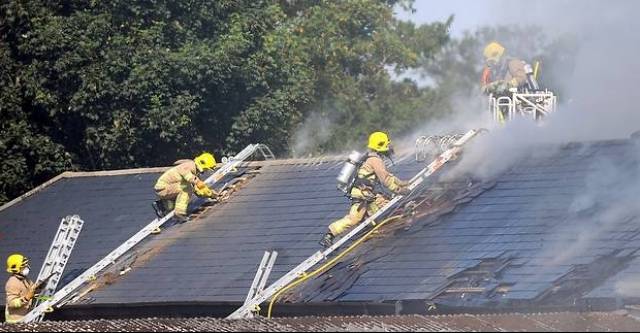
-
Bedford Lodge Hotel
-
Following Harry Wragg's departure from Bedford Lodge in 1946 the
house became the hotel that
still exists today - from the licensing details listed below it looks
like it opened in 1949.
- Suffolk Record Office, Bury St Edmunds Branch
West Suffolk Quarter Sessions
New licences BA 500/C1/10-90
Bedford Lodge Hotel, Newmarket BA 500/C1/18 1 Apr 1949
Bedford Lodge Hotel, Newmarket BA 500/C1/28 7 Apr 1952
Bedford Lodge Hotel, Newmarket BA 500/C1/47 20 Apr 1955
- Many thanks to Tony Pringle for the photos 'Bedford Lodge Stables c. 1875' and
'Bedford Lodge Hotel 1956'.
- Many thanks to Paul Simmons, Leisure Manager at the Bedford Lodge
Hotel for the photos 'Bedford Lodge Hotel 2013'
and 'Rockfield House - Bedford Lodge Hotel Luxury Spa 2013'.
Building Changes
- Suffolk Record Office, Bury St Edmunds Branch
Newmarket Urban District Council Records
Reference EF 506
- Billiard room, Bedford House, Bury Rd, for Capt J.O. Machell (W.C.
and A.S. Manning) EF 506/6/1/H87 Aug 1895
- Alterations and additions, Bedford Lodge, Bury Rd, for The Earl of Derby (John Leslie, Knowsley) EF 506/6/1/10/208 Sep 1904
- Drainage, Bedford Lodge, Bury Rd, for The Earl of Derby EF 506/6/1/10/234 Feb 1905
- Alterations to form groom's room, next to trainer's house, Bedford Lodge, Bury Rd, for the Earl of Derby (John Leslie, Knowsley) EF 506/6/1/11/253 Aug 1905
- Wooden loose boxes, Bedford Lodge, Bury Rd, for the Earl of Derby (John Leslie, Knowsley) EF 506/6/1/12/323 Jan 1908
- Additional wooden boxes, stables, Bedford Lodge, Bury Rd, for the
Earl of Derby (J. Leslie, Knowsley) EF 506/6/1/13/360 Jun 1909
- Additions, Bedford Cottage, Bury Rd EF 506/6/1/14/422 Jan 1912
- Additional living room, Bedford House, stables, Bury Rd, for Capt
J.W. Bewicke EF 506/6/1/17/551 Apr 1920
- Additions to trainer's house, Bedford Lodge stables, Bury Rd, for R.W. Colling (L.E. Cole) EF 506/6/1/17/573 Nov 1920
- Return to top of page
| OBITUARY Harry Wragg, the former champion jockey and trainer, died on October 19 at the age of 83. Known affectionately as "the Head Waiter" for tactical skills which enabled him repeatedly to produce his mount for a victory at the- last minute, Wragg rode from the end of the First World War until 1946, winning 13 English classics, and turned trainer in 1947 to have an outstandingly successful career also. When he retired as a trainer in 1983 he had won six English classics, only the Oaks eluding him. Wragg served his apprenticeship with Robert Colling at Newmarket and rode his first winner in 1919. Two years later he won the Ormonde Plate for King George V on W'ill Somers and thereafter rode regularly as a royal jockey. In an era dominated by Sir Gordon Richards, Wragg won the jockeys' championship only once, but he was rated one of the finest brains in racing and his tally of classic wins included three Derbys. The waiting tactics which got him his nickname were first displayed in the 1928 Derby which he won on Felstead and he repeated the feat in 1930 on Blenheim. Though he was widely criticized for leaving his challenge too late, the following year, when he finished only third on Sandwich, 1931 turned out to be his best season and his 110 winners included the St Leger on the same horse. Other memorable victories were the 1938 Oaks on, Rockfel and the Oaks on Commotion in 1941, the season in which he was champion jockey. In 1942 Wragg became first jockey to Lord Derby, winning that year's Derby for him on Watling Street and riding to victory in another five classics over the next few seasons. When Wragg turned trainer in 1947 he quickly made an impact. In his 36-year career he trained six English classic winners, perhaps the highlight being Psidium who carried off the 1961 Derby at odds of 66-1. Among his seven Irish classic winners were three Derbys. Wragg retired as a trainer in 1983 after enjoying his best ever season, winning £250,000 prize money for his owners. |
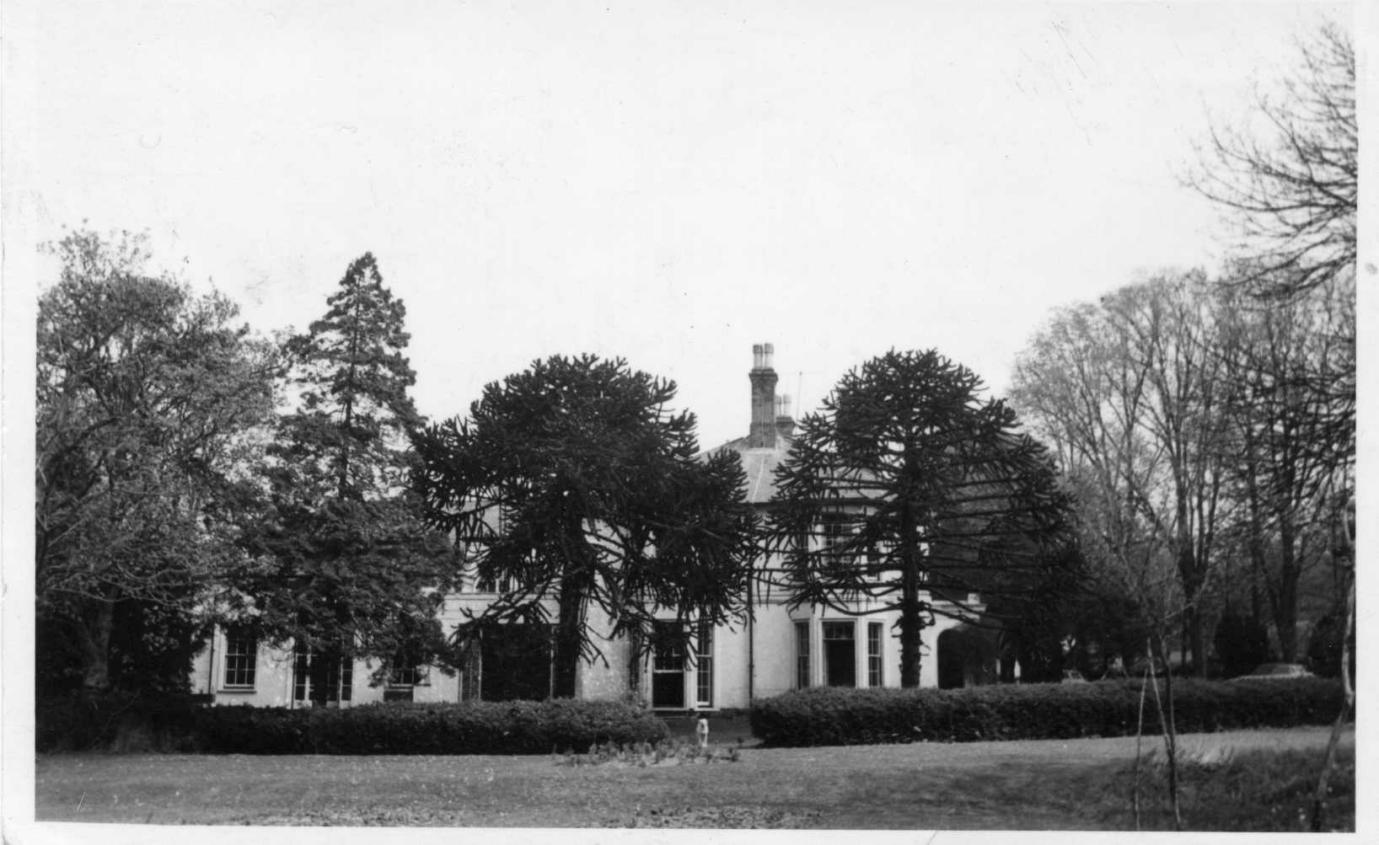 Bedford Lodge Hotel 1956 |
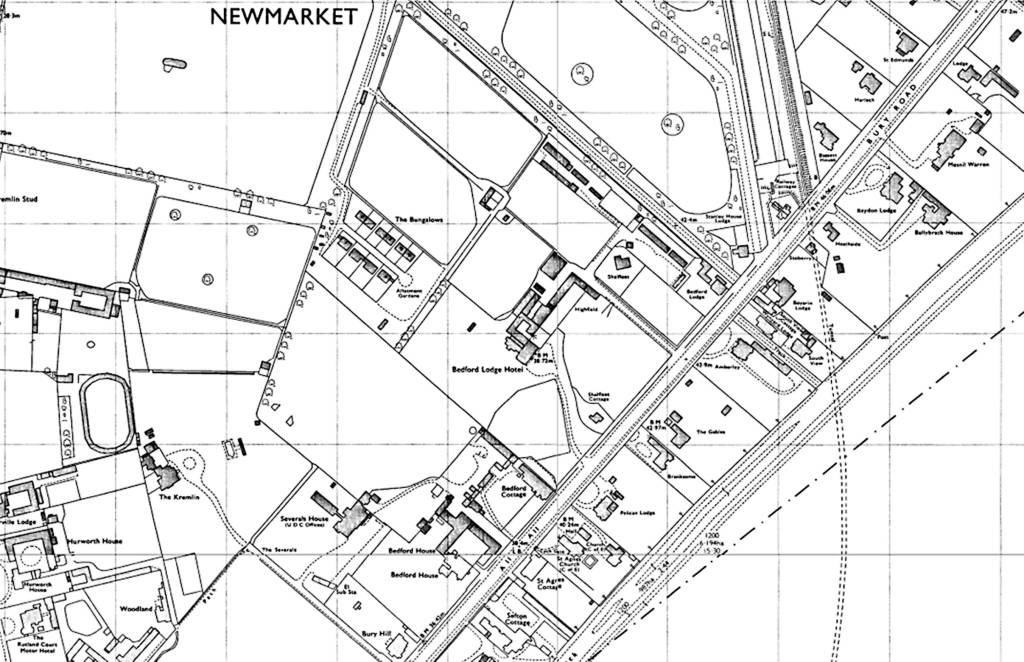 Bedford Lodge Hotel 1970 |
| IMPORTANT
NOTE from the WEBMASTER Content on this web site is attributed as appropriate to its original source or supply - can I ask that any copying or subsequent citation should respect the original author(s) and reference them or this web site as the source of this material Thank you |
|
| © 2016 | |
